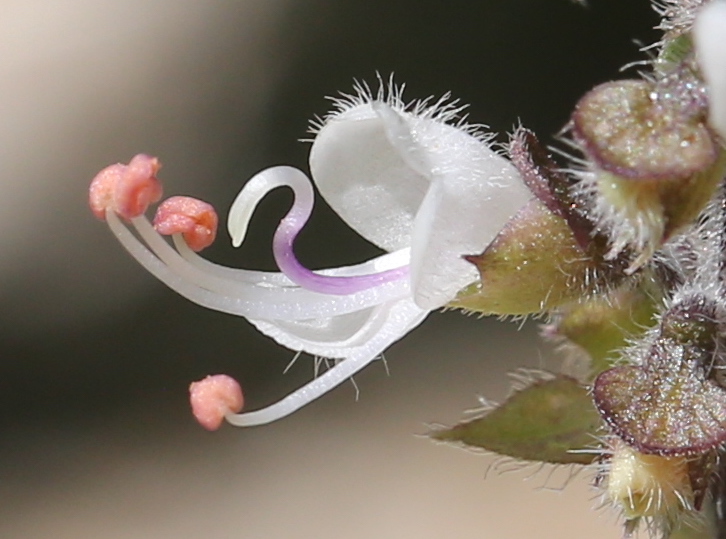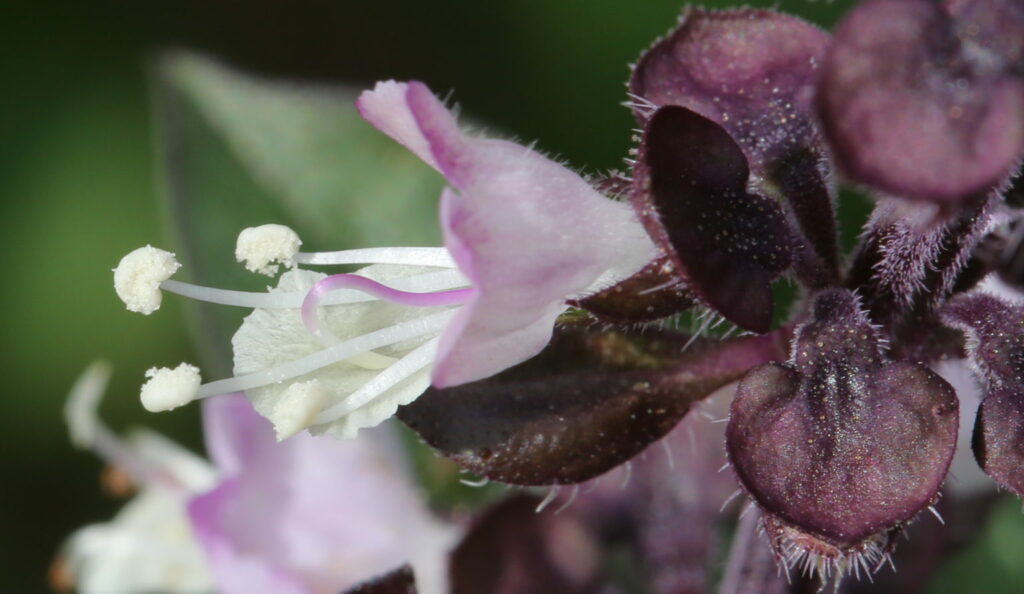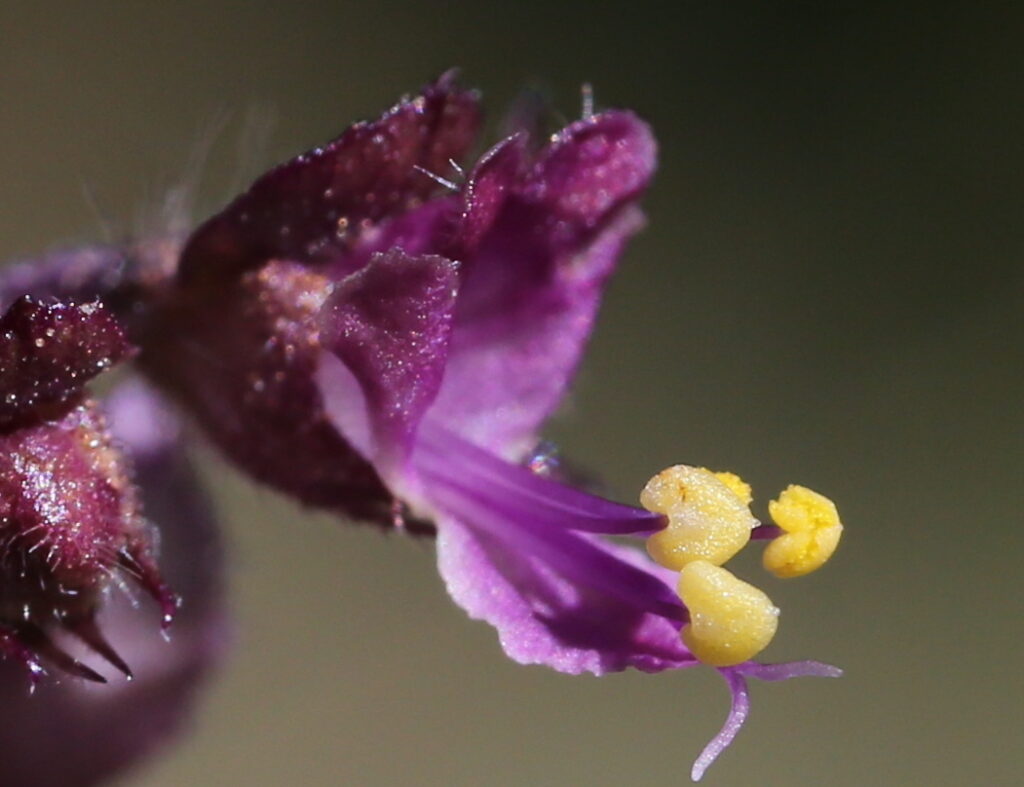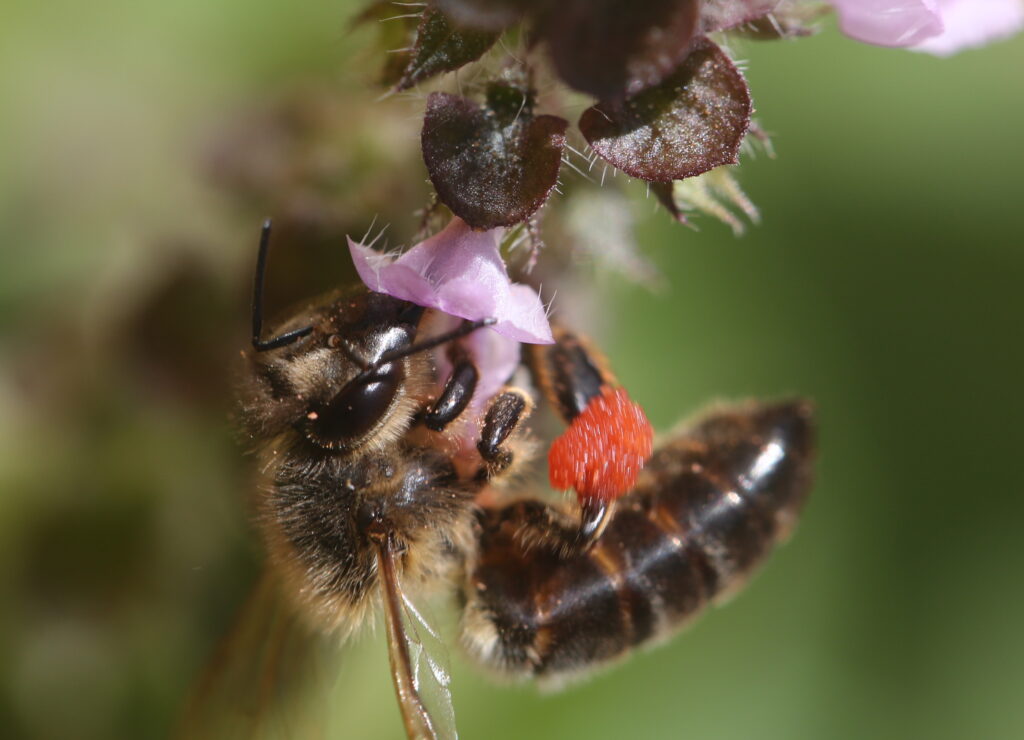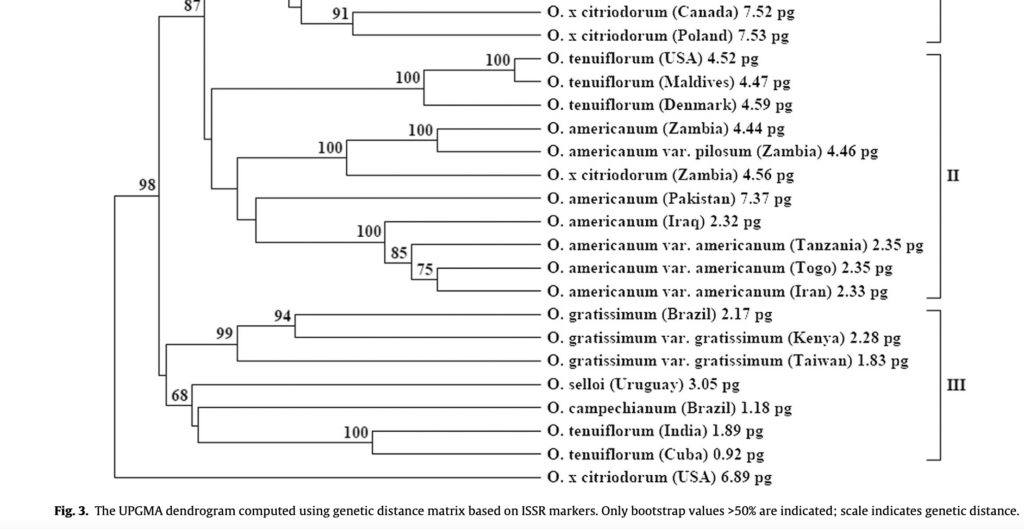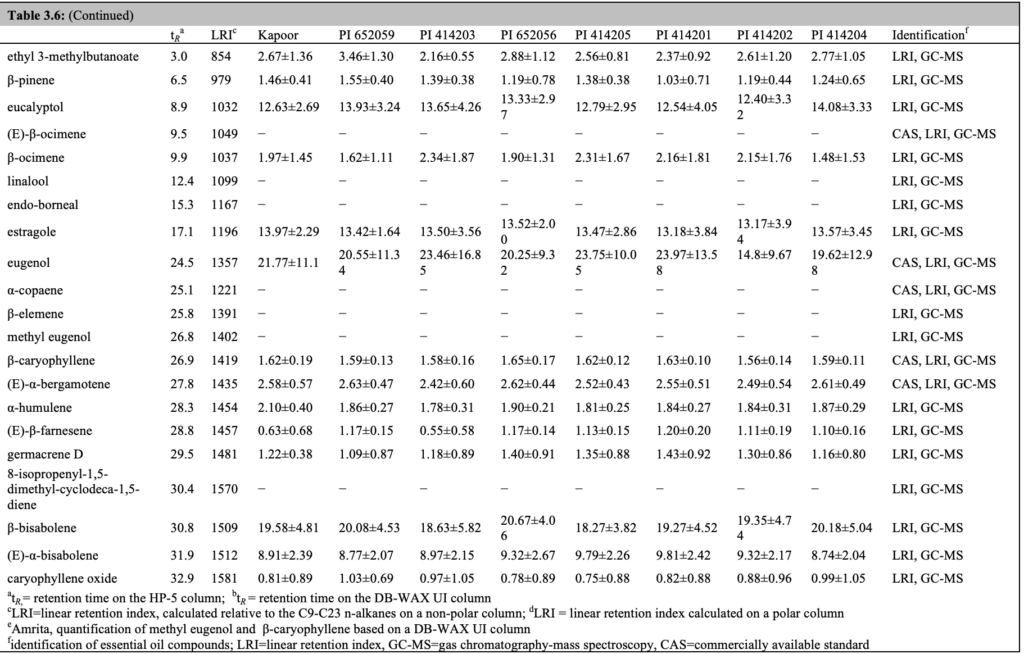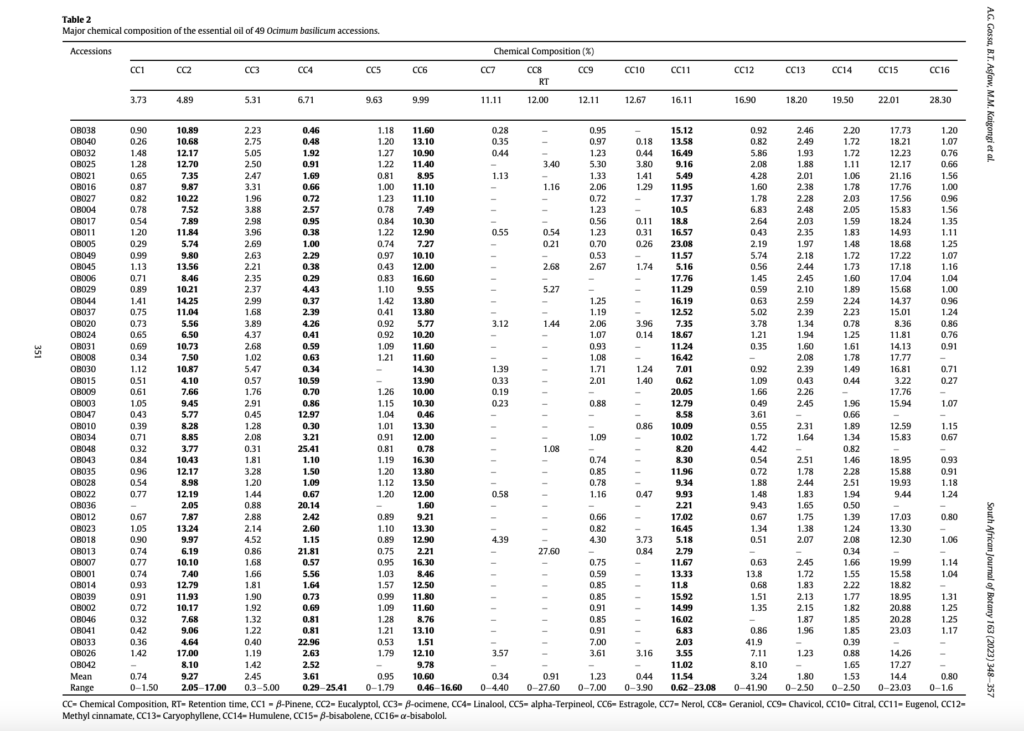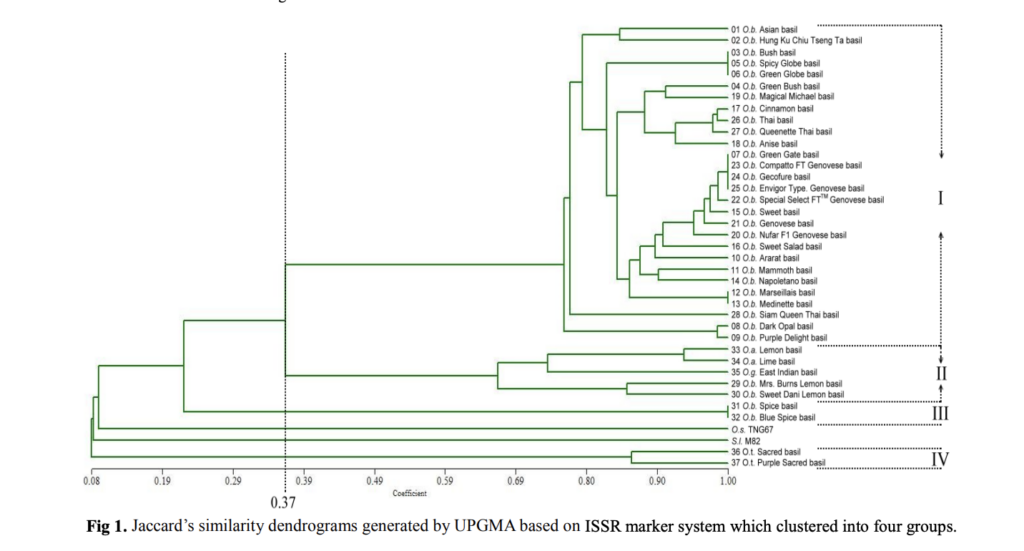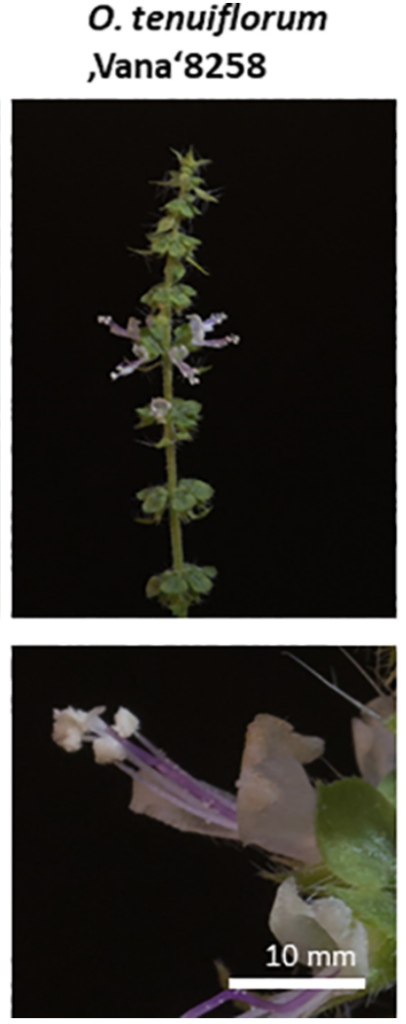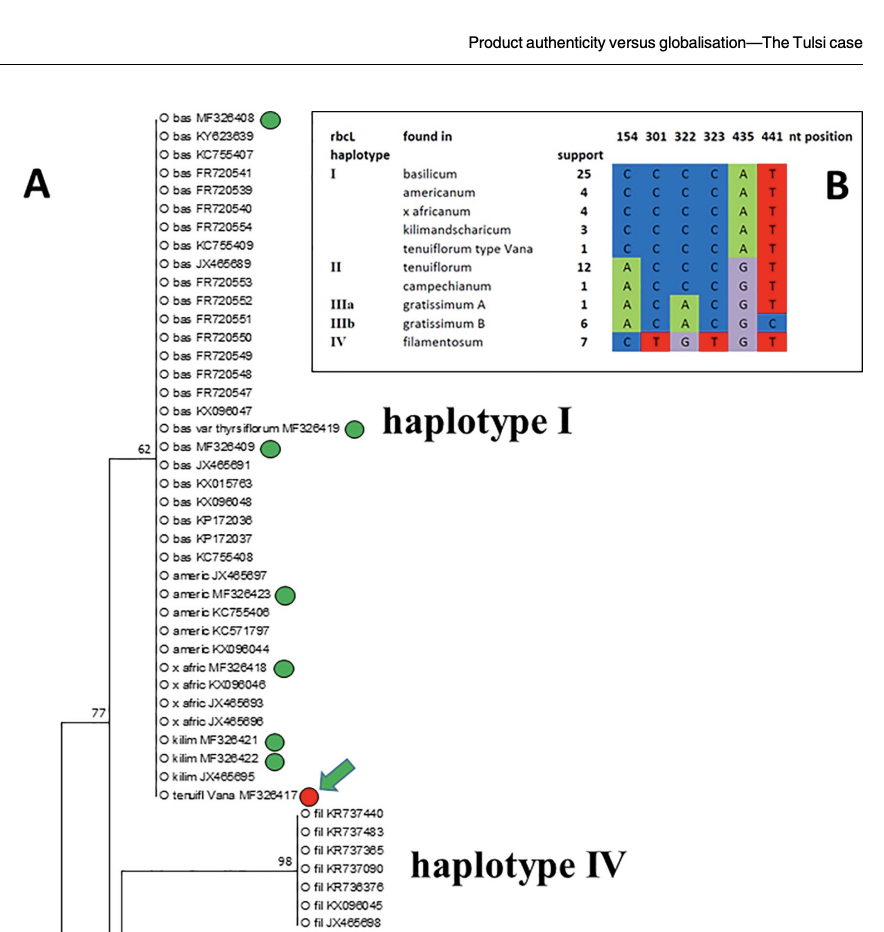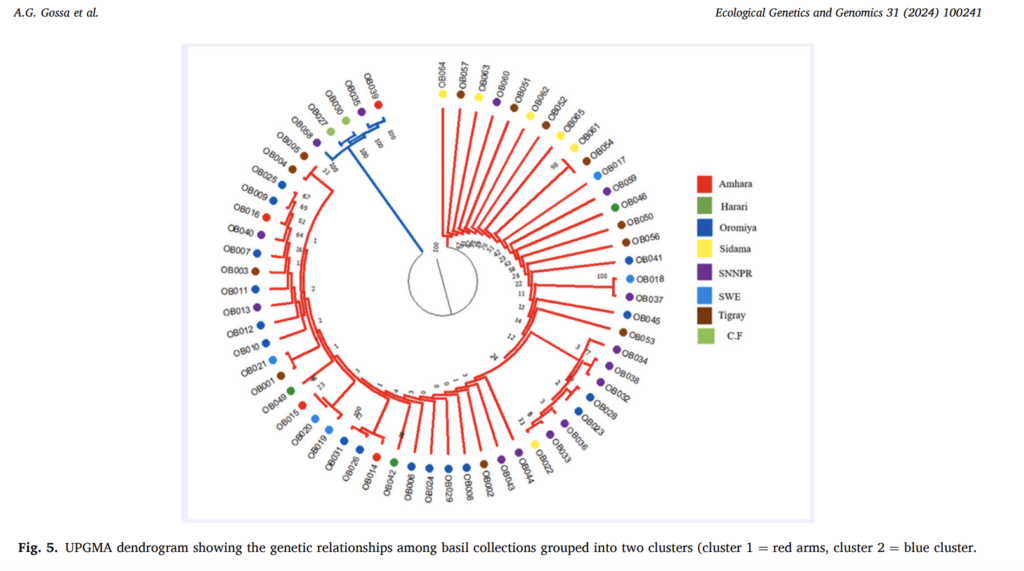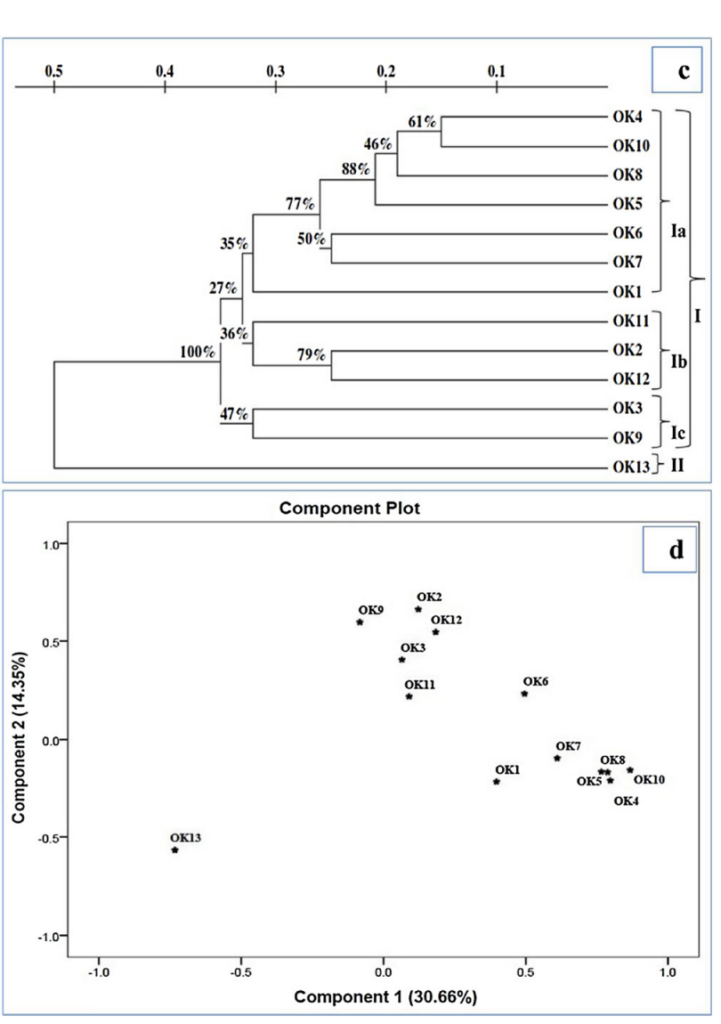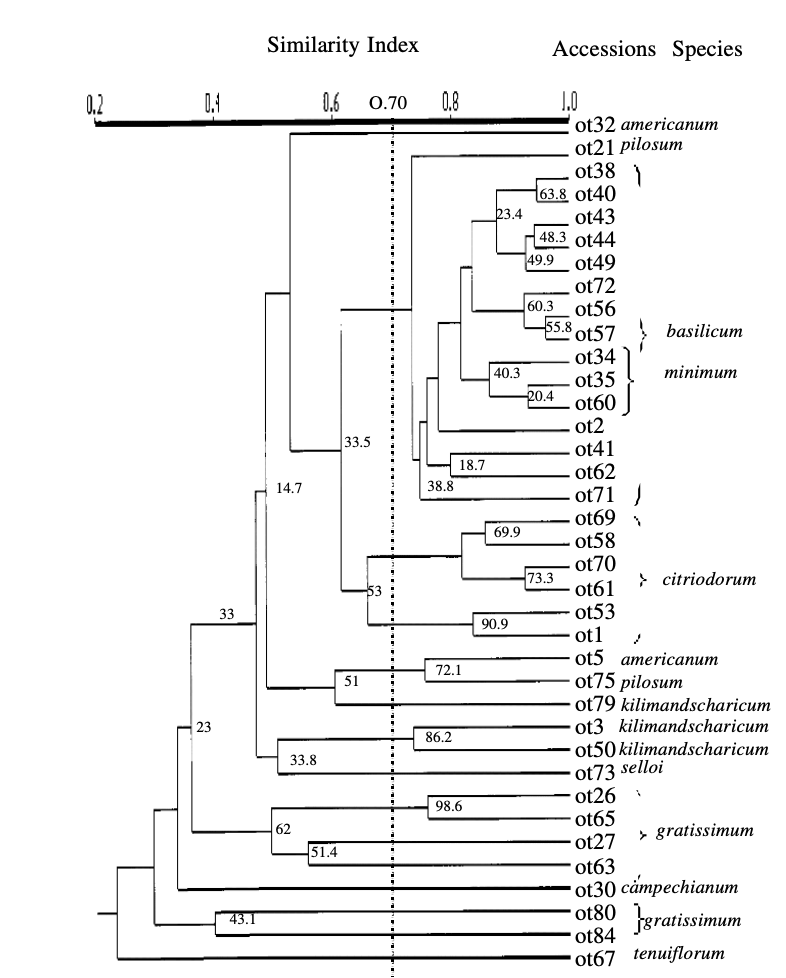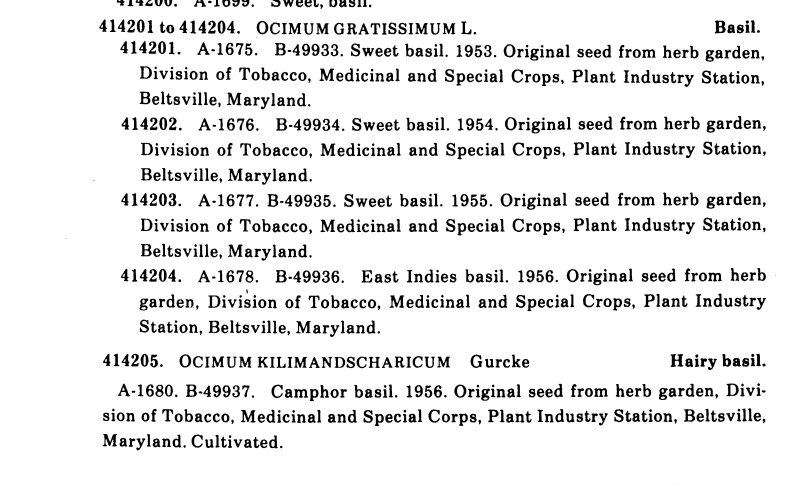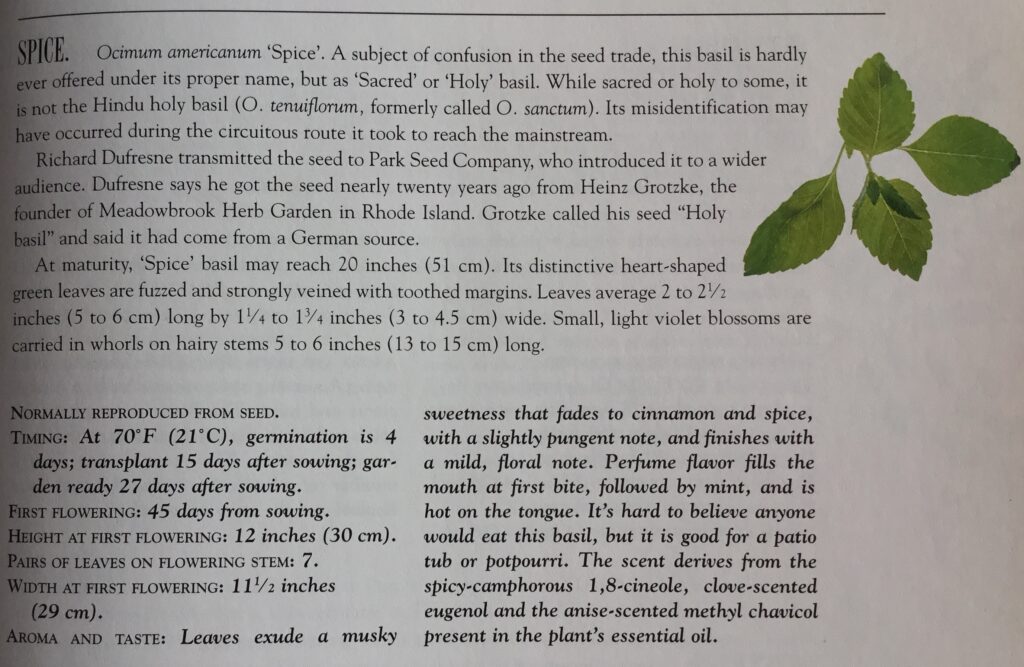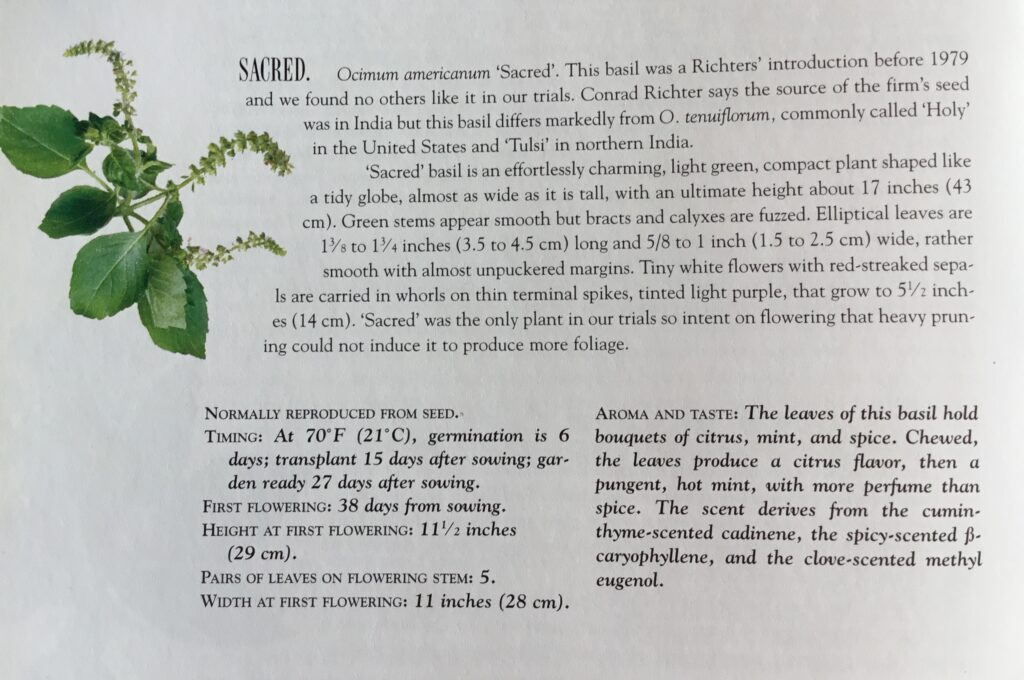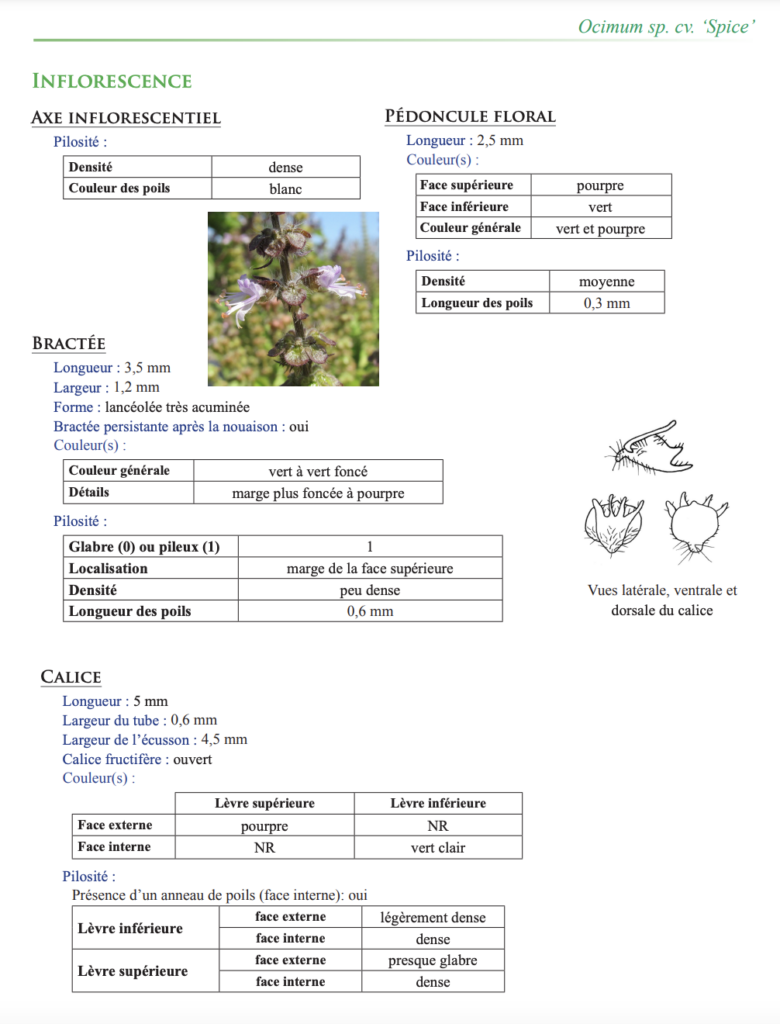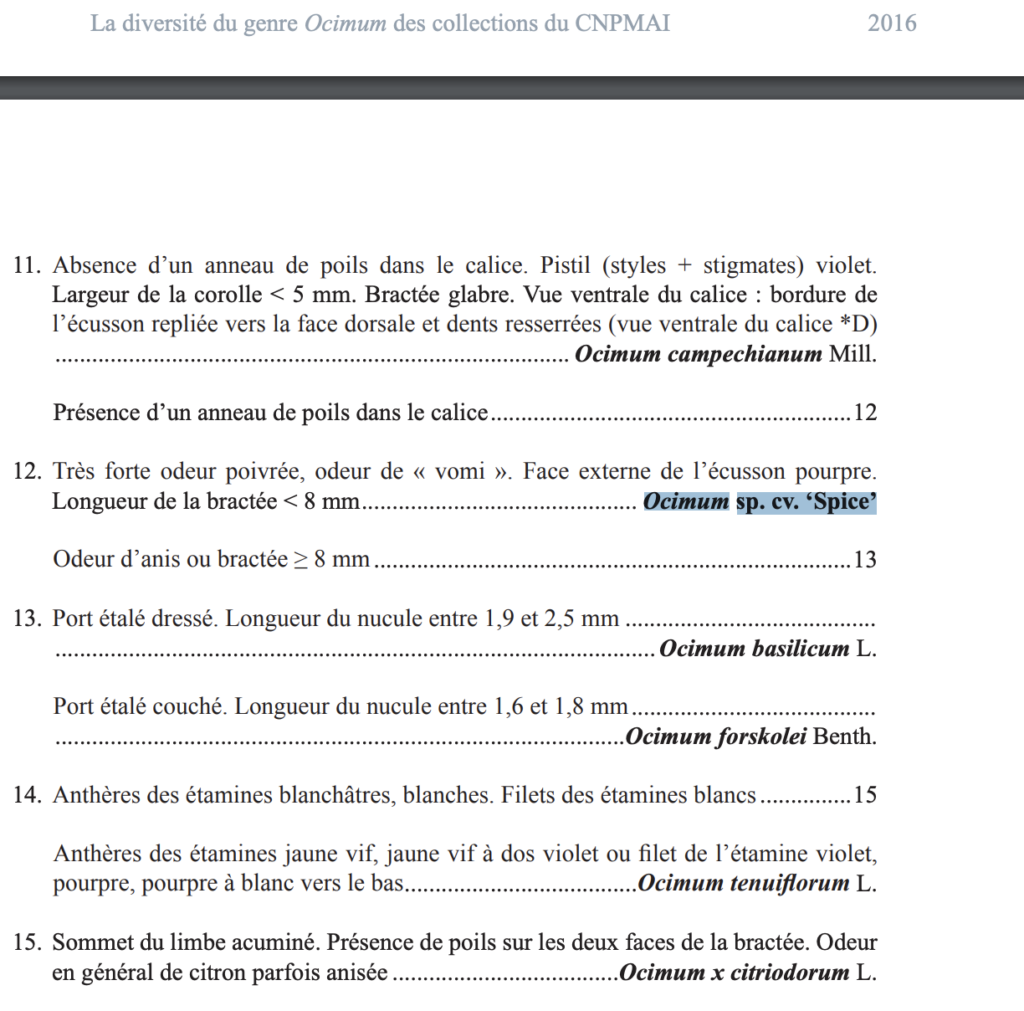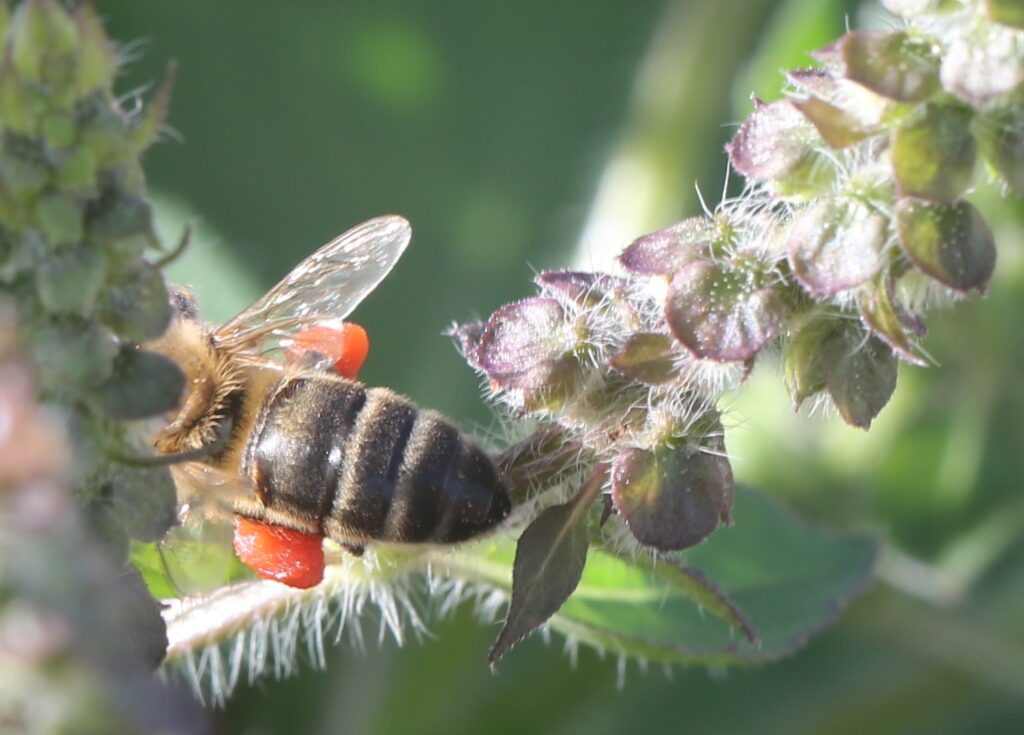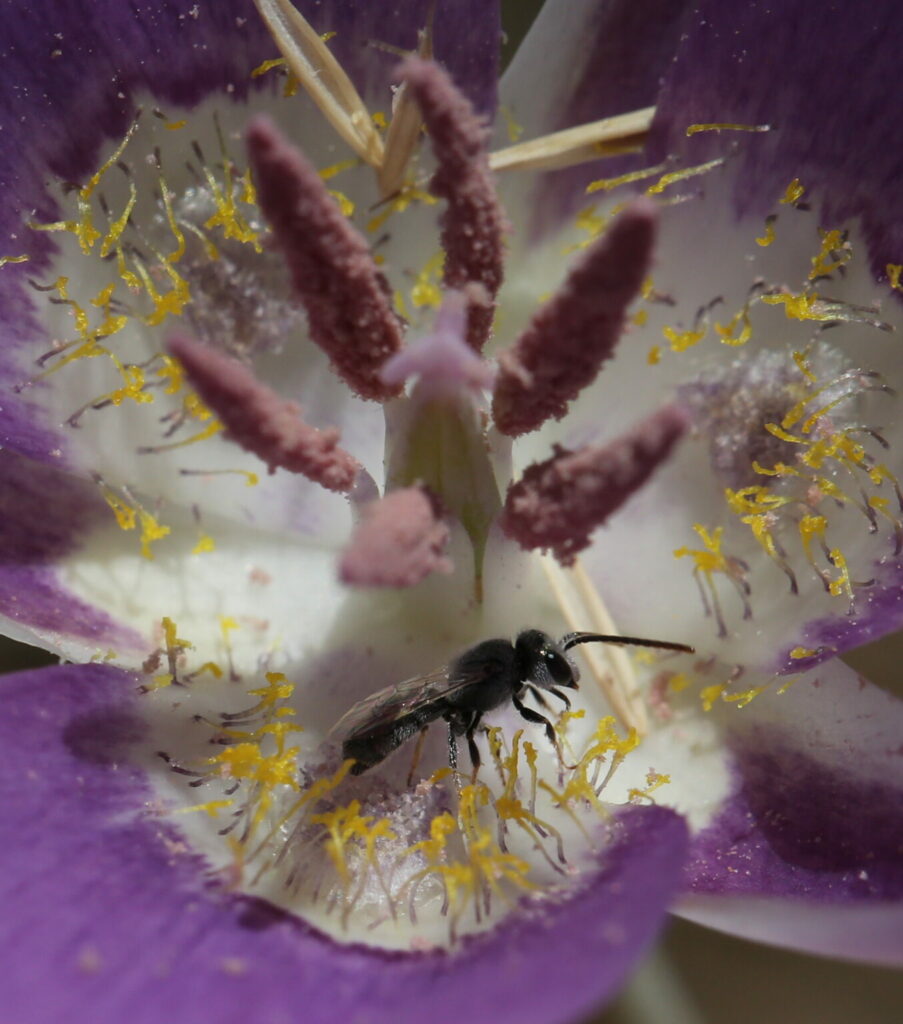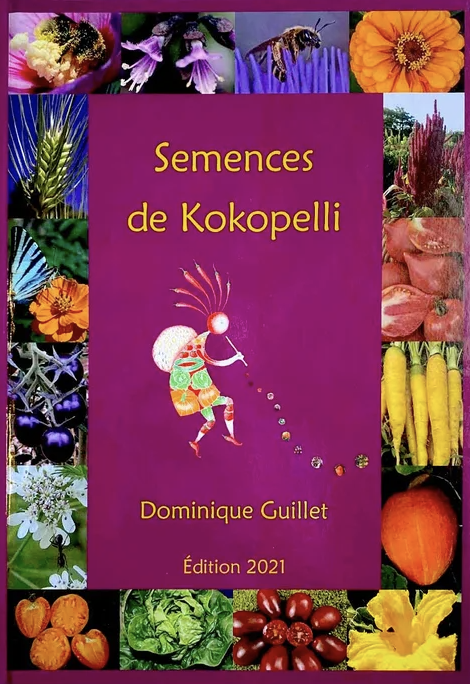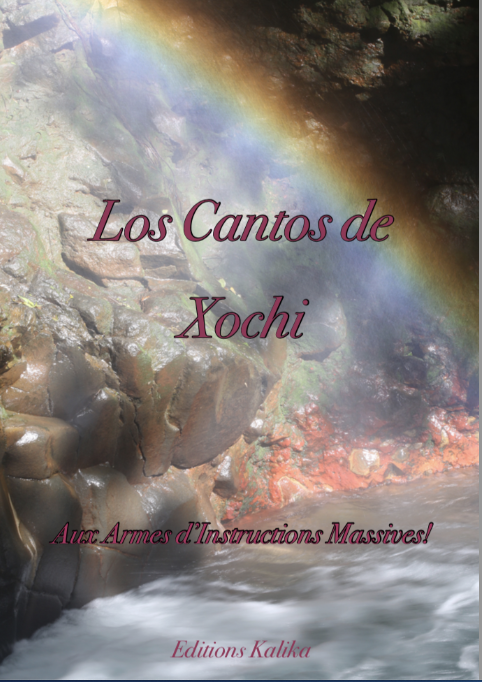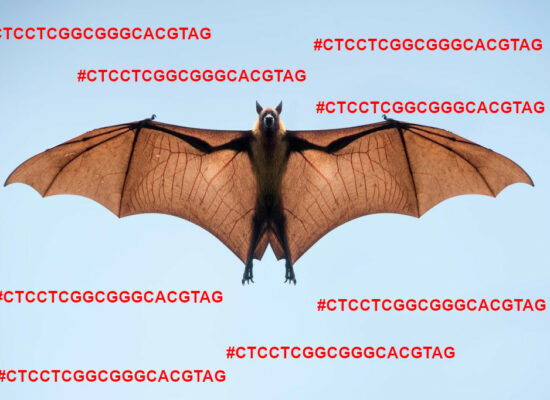Summary
What is the only Ocimum species on Earth…? Any Basil world “expert” able to prove me wrong on any of these 26 following facts, of the Real world, about the Ethiopian Besobila?
What the Fake is Going on in the Ocimum world?
116 Published Studies, on Ocimum, to be Retracted, or Corrected, from the Years 1990 to 2025
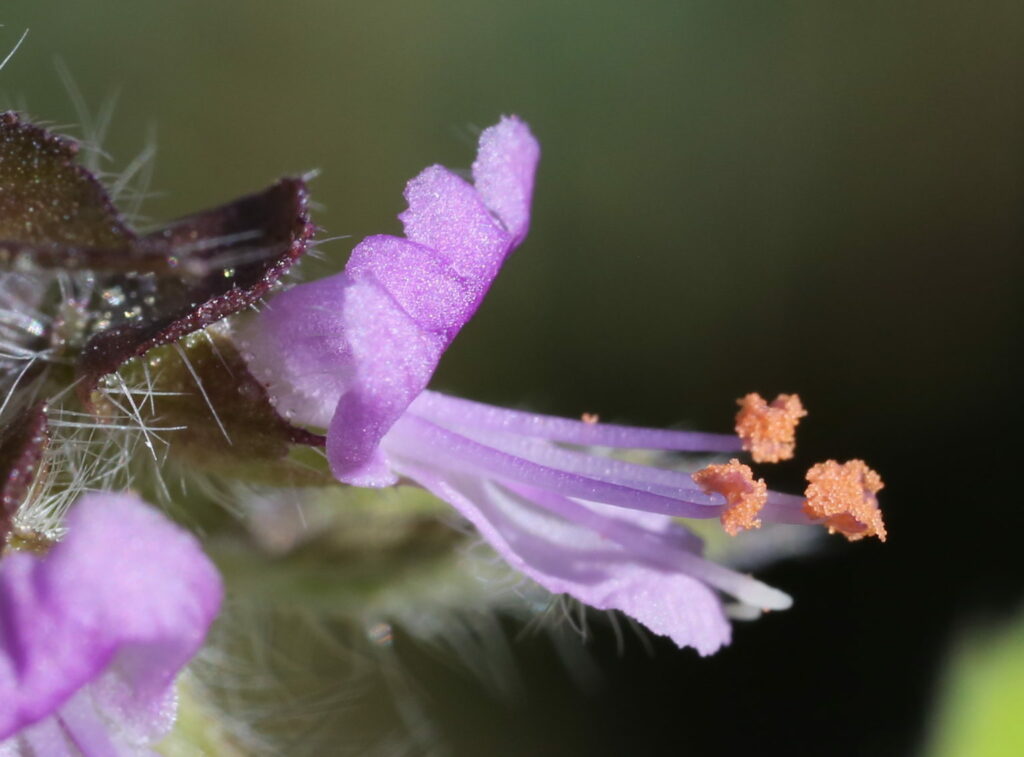
This “Manifesto” is a teaser of my main monograph on the subject: “Ethiopia is the source of the temperate Tulsi with its spicy scent of vanilla and myrrh… and red pollen – Ocimum bisabolenum”
Caveat. This “Manifesto” could, as well, be considered as an “open letter” addressed to all the so-called Basil world experts, and all the scientists working with Ocimum in their sanitized laboratories such as: James Simon, Alan Paton, Klaudija Carovic, Aynalem Gebre Gossa, Bizuayehu Tesfaye Asfaw, Bekri Melka Abdo, Weldemariam Geja, Weretaw Sisay, Geeta Tewari, Nativ Dudai, Faith Belanger, R. K. Joshi, Rajendra C. Padalia, E. Svecova, J. Neugebauerova, Amit Aggarwal, N.S. Gill, Yemisrach Fikadu, Bhagwan Singh Chandravanshi, Estifanos Ele Yaya, Magrate M. Kaigongi, Edeget Merawi, Taye Birhanu, Hewan Demissie, Sintayehu Musie, Peter Radacsi, Rajni Rawat, Vandana Tiwari, Andrea Copeta, Jessica Frigerio, Federica Betuzzi, Miriam Bazzicalupo, etc, etc…
I wrote to them, in August 2022, or in November 2023, or very recently, but just a few ones dared to answer me… as I have no PdD from the Neo-Darwinian lottery!
By the way, in August 2022, I named this species of Ocimum, “Ocimum bisabolenum” – which seems logical in relation with the denominations “Besobila”, “Bisabol” and “Bisabolene” – because, obviously, nobody else, before myself, had the capacity to “imagine” that the so-called temperate Sacred Basil, or temperate Tulsi, or “Spice” and “Blue Spice”, could be a species with an Ethiopian origin – and the capacity to prove it.
And, today, I challenge any Basil and Ocimum specialists, in the world, to prove me wrong on the contents of this present essay and of my preceding very long monograph about Ocimum bisabolenum from Ethiopia. Thank you for your attention!
About the Good News. I introduced, and widely disseminated, organic seeds of the temperate Sacred Tulsi, Ocimum bisabolenum, in France, and in Europe, in 1994. Thirty years later, Association Kokopelli has chosen this species for its 2024 Campaign, “Cultivons-nous. Pour la Libération des Plantes Médicinales”, [69] and has distributed, free of charge, 88 238 organic seed packets, of Ocimum bisabolenum, since the spring 2024, to all the French gardeners requesting it.
The objective of the annual Kokopelli campaign is to focus on a Master Medicinal Plant, to distribute free seed-packets for the gardeners to produce a bounty of seeds… for subsequent dissemination – locally or towards the poorest rural communities of the Third World countries. In 2019, Association Kokopelli distributed, in France, close to 110 000 seed packets of the wonderful Master Medicinal Plant for the preventing and cure of the Malaria, Artemisia annua.
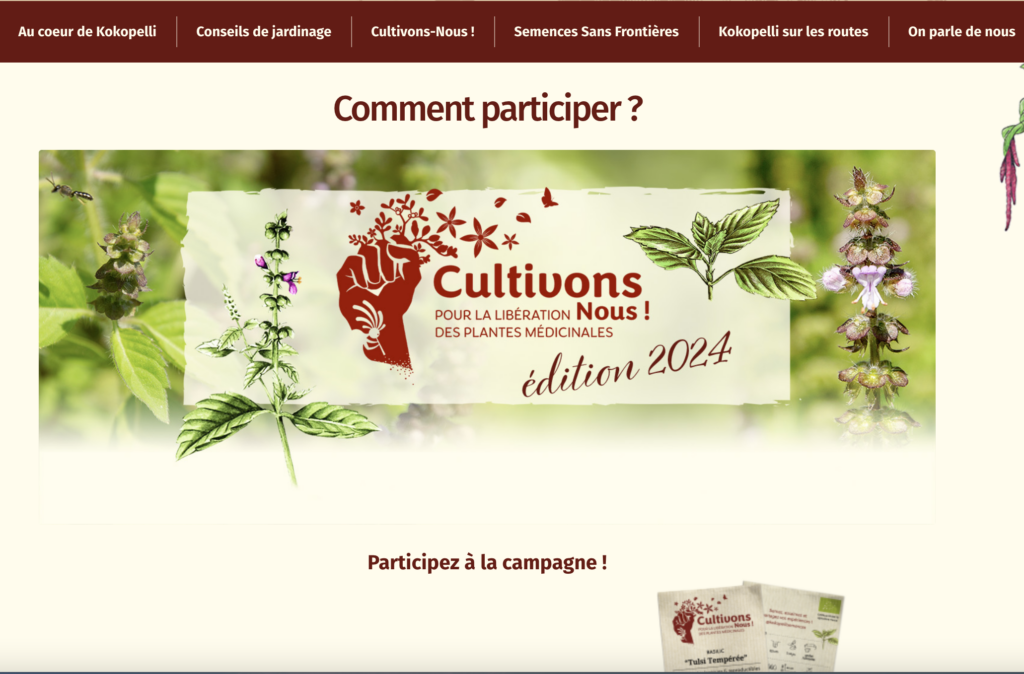
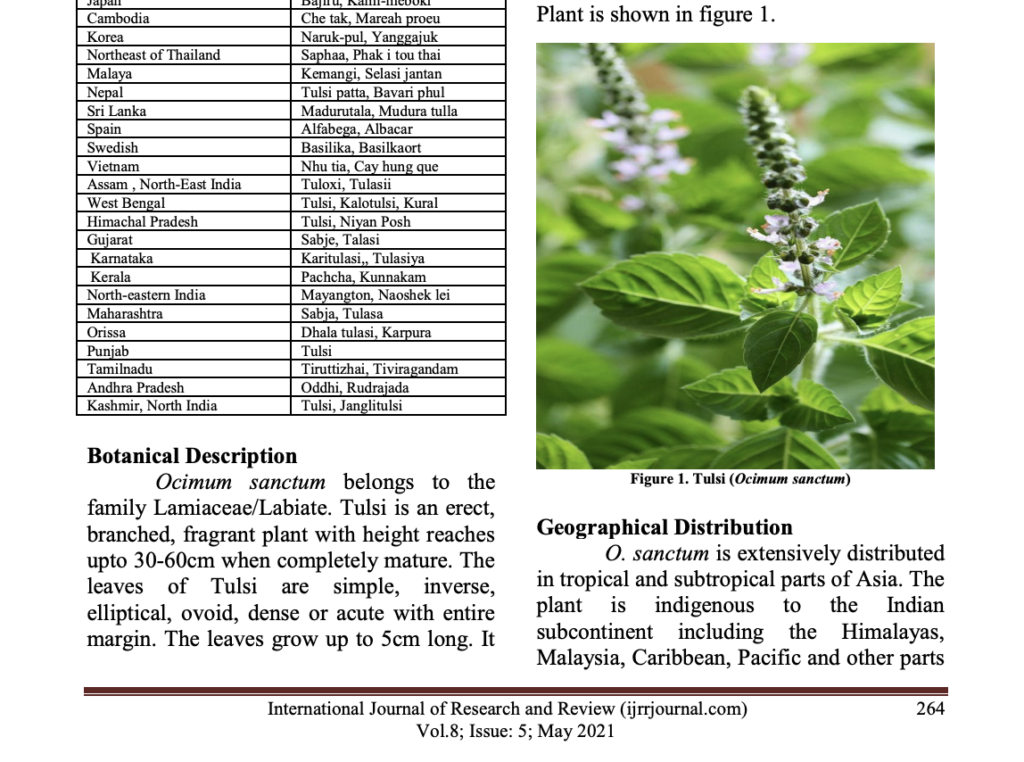
Before entering, with passion, in the heart of the matter – the botanical chaos surrounding the species I named Ocimum bisabolenum, the Ethiopian Besobila – I am presenting, different chapters to prove my point: the Ethiopian origin of the temperate Sacred Tulsi growing widely in Europe and north America, since the 70s, and his status as a true species.
I am inserting, here and there, a few pictures of flowers of diverse Ocimum species to highlight the fact that if you pay attention, you can not miss it! Ocimum bisabolenum is unique in the world: it is a true species. Welcome to the botanical nomenclature!
In the first section, I am presenting some 26 points – botanical, historical, agronomical, genetic, ethnic and, thus, existential – concerning the Ethiopian Besobila, Ocimum bisabolenum…. as an appetizer.
May I invite any Basil world “expert” – or any lab type “scientist” – to prove me wrong on any of these following 26 facts of the Real world? Because, my friends, we do not live, yet, in a totally demented and phantasmagorical virtual reality. Let’s Touch the Earth!
In the second section, I gathered all my previous comments about the genetic proofs of the existence of Ocimum bisabolenum – and added new ones especially about the enigmatic ecotype named “Vana 8258”.
In the third section, I am presenting a botanical description of Ocimum bisabolenum – offered by the impressive and excellent document, in French, from the Conservatoire des Plantes Médicinales, Milly la Forêt, entitled “La diversité du genre Ocimum dans les collections du CNPMAI”/“The diversity of the genus Ocimum in the collections of the CNPMAI” – which comprises 286 pages.
In the fourth section, I am delineating, as briefly as I may, the many episodes, since the 90s, of this scandalous obfuscation of the truths concerning the Besobila from Ethiopia, Ocimum bisabolenum – in order to express my rage.
Concerning my latest discovery, in my garden, of spontaneous crosses, with orange pollen, between Ocimum basilicum and Ocimum kilimandscharicum… I do hope that the so-called Basil world experts are not going to accuse me of deep-faking and photoshopping some pictures to prove my point!!!
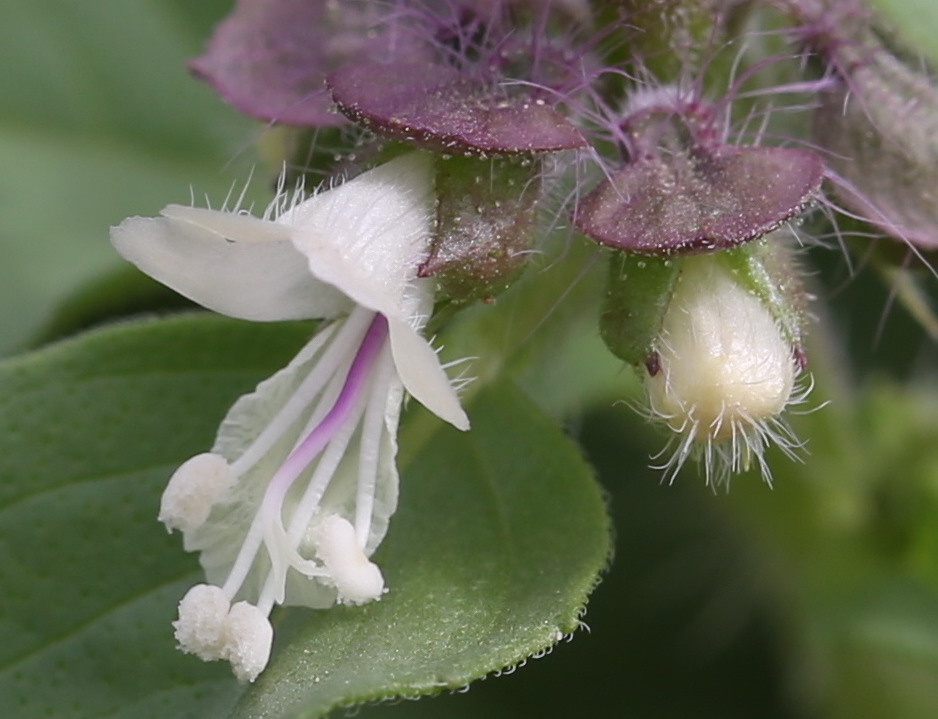
In the fifth section, I am delineating, by chronological order, the bagatelle of 116 published Basil studies – spanning more than a quarter of century between 1990 and 2024 – which should be, properly, retracted or, at least, corrected.
I am well aware that all of the following 116 published Basil studies – to be retracted or, at least, corrected – have been co-authored by professional PhD. Moreover, in most of the cases, if not all, the Basil genetic resources, upon which these studies are based, have been identified, and certified, by professional PhD botanists – at the species level in the genus Ocimum – which speaks a lot about the blatant ignorance of some of the supposed Basil experts around the world, today – be they from the GRIN/USDA seed bank or other official state institutions.
In the sixth section, lastly, as I am privileged not to be burdened by any PhD, in Life, I am offering a few clues about my credentials, missions and feats – stemming from the Real Life and not from neo-darwinian decadent universities.
Of course, the “Deep-Fake” of the virtual screen, occulting Ocimum bisabolenum, is nothing but an epiphenomenon in regards to the globalist agenda of total digital and sanitary dictature on the planet – and in regards to the world-wide gaslighting of the naive masses ready to gobble up any lies stemming from the corrupted media.
I am not the last one to name the eugenist Banksters but, for sure, I was one of the first ones, in France, to tell the truth of the fake CoYid/19 pandemics which never existed – as early as February 2020 – and of the subsequent campaign of graphene contaminated injections generating a dramatic human genocide. In truth, the year 2020 was a year characterized by a very mild flu and most of the countries, who imposed a harsh sanitary dictature, witnessed a pronounced under-mortality. Go and check by yourself with the governments’ official data. The Sars-CoV-2 is a “Deep-Fake” – as it was never isolated!!!
On this very hot subject, within 4 years, I wrote thousand of pages in French (130 articles, essays, dossiers, Cantos, etc) and I invite, any sane and conscious readers, to consult some of my English translations of this giant opus on my Xochipelli’s Substack. Link.
Enjoy and awake… because Times are changing!
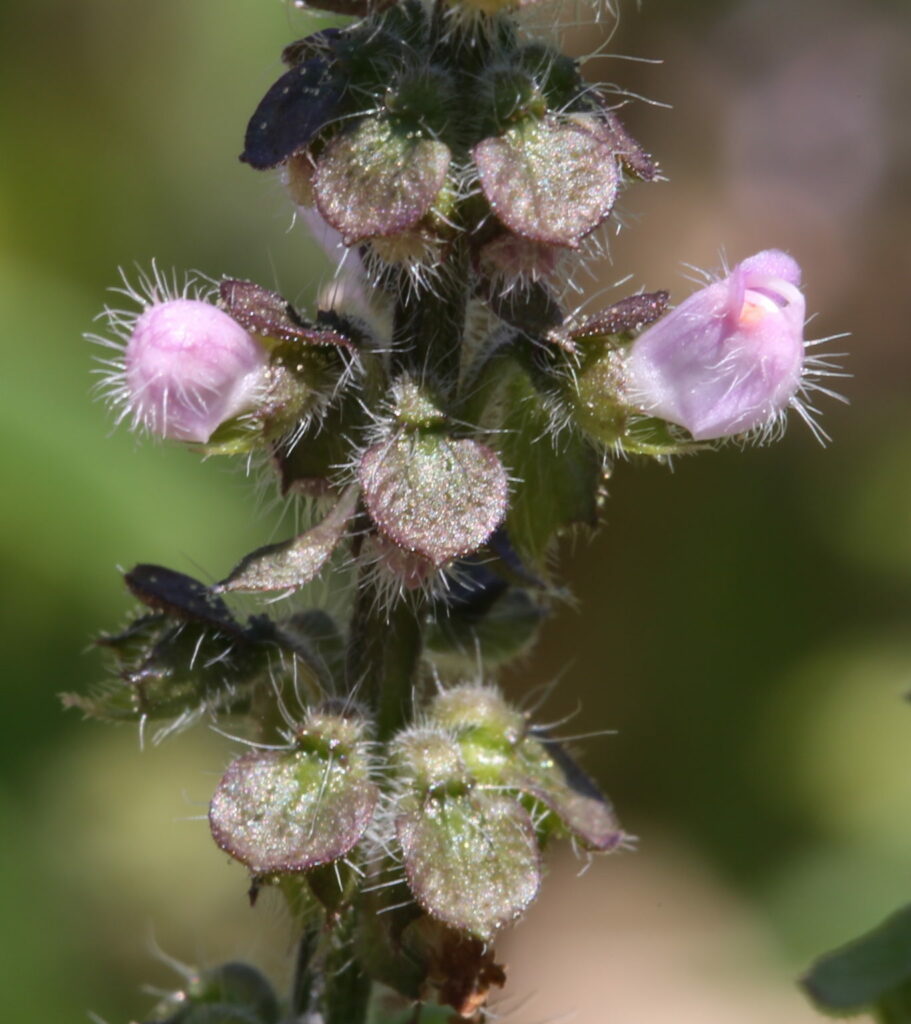
What is the only Ocimum species on Earth…?
Any Basil world “expert” able to prove me wrong on any of these 26 following facts, of the Real world, about the Ethiopian Besobila?
What is the only species of Basil, on Earth, having a name related to “Bisabol”, the resin of the African Myrrh tree, Commiphora guidotti – growing in Ethiopia and Somalia? The “Besobila” from Ethiopia, Ocimum bisabolenum.
What is the only species of Basil, on Earth, known for its exquisite spicy vanilla, tutti frutti and myrrh fragrance? The Besobila from Ethiopia, Ocimum bisabolenum.
What is the only species of Basil, on Earth, known to have up to 45,79% (in Ethiopia) or up to 46,55% (in Ranikhet, Uttarakhand, India) or up to 56,97% (in a Croatian study [51]) of Bisabolene in his essential oil? The Besobila from Ethiopia, Ocimum bisabolenum.
What is the only species of Basil, on Earth, known to have a Bisabolene chemotype with then, Eugenol, Eucalyptol, Estragole as its 4 major permanent components? Ocimum bisabolenum.
What is the only species of Basil, on Earth, used by People to preserve milk products and keep the clarified butter for up to 15 years? The Besobila from Ethiopia, Ocimum bisabolenum.
What is the only species of Basil, on Earth, coming from Ethiopia, being mentioned, as early as 1981, as having orange anthers? In Maria Jansen’s renowned opus, “Spices, condiments and medicinal plants in Ethiopia, their taxonomy and agricultural significance”. The Besobila from Ethiopia, Ocimum bisabolenum.
What is the only species of Basil, on Earth, as being characterized, as early as 1990 and 1999, as a Bisabolene chemotype by the US researcher James Simon? It was the GRIN “PI 414205”, in 1990 [39], and “Blue Spice” in 1999 [41], both ecotypes of Ocimum bisabolenum.
What is the only species of Basil, on Earth, with a small mauve flower, with mauve styles and stamen filaments, with a very small peduncle, with purple margins on the young leaves and with red-orange pollen? Ocimum bisabolenum.
What is the only species of Basil, on Earth, having a “blue denomination” – as per the bluish-mauve hue which emanates, and radiates, from its very long flower spikes? “Blue Spice”, an ecotype of Ocimum bisabolenum.
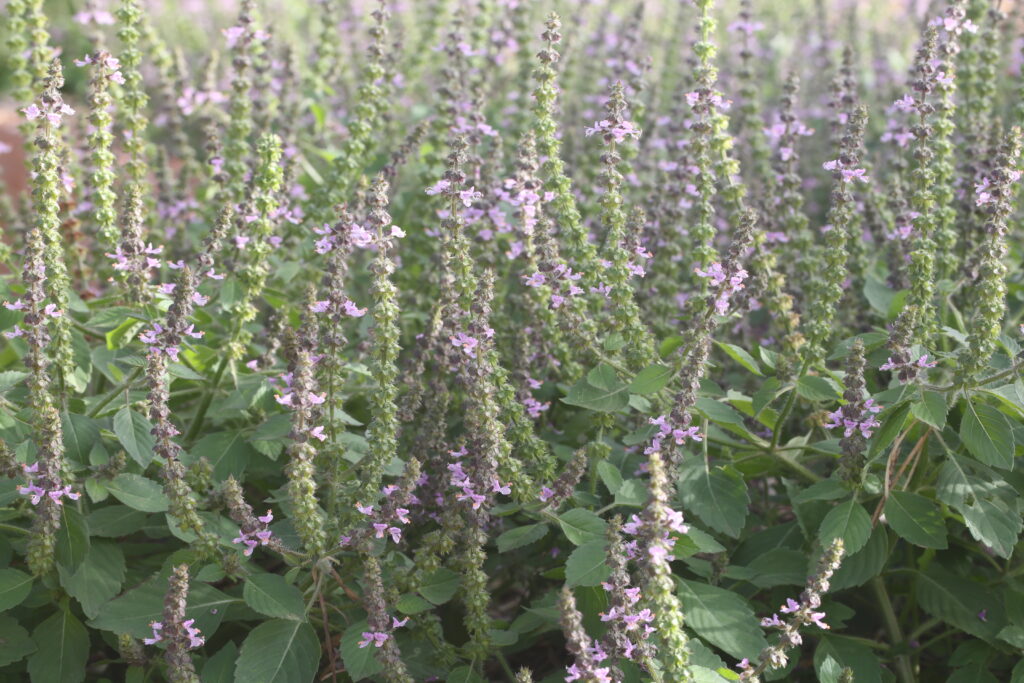
What is the only species of Basil, on Earth, which, as early as 1974, was given the denomination “Spice Basil. Ocimum sanctum”, in the New York Botanical Garden Press , by Helen H. Darrah who described its “lavender corollas and orange stamens” and who mentioned that it was widely grown in the United States and that it was the name given by many American growers? Ocimum bisabolenum.
What is the only species of Basil, on Earth, having a weight of 0.63 g per 1000 seeds – twice as heavy as Ocimum tenuiflorum seeds and two to three times lighter than Ocimum basilicum seeds? Ocimum bisabolenum.
What is the only species of Basil, on Earth, having 70% of octacolpate and heptacolpate pollen grains – when hexacolpate pollen is the norm in the genus Ocimum? Ocimum bisabolenum.
What is the only species of Basil, on Earth, which embalms the garden as soon as the plants are, just, lightly touched or watered? Ocimum bisabolenum.
What is the only species of Basil, on Earth, thriving everywhere in Europe and north-America, gratifying the honey-bees with balls of red pollen? Ocimum bisabolenum.
What is the only species of Basil, on Earth, thriving everywhere in Europe and north-America, known for its incapacity to cross-pollinate with other species of Ocimum – or, at least, known for the absence of reports from professional organic seed-growers for the past 50 years? And that, in spite of the honey-bees which are frantically foraging in the plants. Ocimum bisabolenum.
What is the only species of Basil, on Earth, thriving in the mountains of Ethiopia (up to an altitude of 2800 m.), or in the Himalayan mountains (up to an altitude of 2000 m.)… or in the cold and temperate zones of Europe and north-America? The Besobila from Ethiopia, Ocimum bisabolenum.
What is the only species of Basil, on Earth, presented by the seed bank of the GRIN/USDA, in USA, as being Ocimum tenuiflorum whereas 7 of their 9 ecotypes are strictly not – as I proved it in my long monograph? And as per their own pictures, also, by the way!!! Ocimum bisabolenum.
What is the only species of Basil, on Earth, which is sold – in organic or non-organic seeds – by a plethora of seed-companies pretending it would be Ocimum tenuiflorum/sanctum, Ocimum americanum, Ocimum kilimandscharicum, Ocimum africanum, Ocimum basilicum x africanum… while presenting pictures disproving it? The so-called temperate Sacred Basil, or temperate Tulsi, Ocimum bisabolenum.
What is the only species of Basil, on Earth, able to grow for a few years, in temperate zones, while flowering during all the winter and surviving temperatures as low as -7°C, when sheltered from the wind? Ocimum bisabolenum.
What is the only species of Basil, on Earth, known to deliver a extremely low amount of essential oil – from 0% to 0.5%? Ocimum bisabolenum.
What is the only species of Basil, on Earth, which has been the most misidentified, for the past 70 years, and named Ocimum basilicum, Ocimum tenuiflorum, Ocimum americanum, Ocimum kilimandscharicum, Ocimum gratissimum, Ocimum lamiifolium, Ocimum carnosum/selloi? In fact, since the years 1953/1956, with the Tobacco Agency in Ames, Iowa. Ocimum bisabolenum.
What is the only species of Basil, on Earth, thriving everywhere in Europe and north-America, which is strictly, and quasi-integrally, resistant to the basil mildew, Peronospora belbahrii? Ocimum bisabolenum.
What is the only species of Basil, on Earth, thriving everywhere in Europe and north-America, able to give 2 or 3 crops (for example, in northern Spain) during the growing season – because he tolerates a wide range of temperatures? Ocimum bisabolenum.
What is the only species of Basil, on Earth, thriving everywhere in Europe and north-America, which gets the trophy of the biggest production of bio-mass – because of multiple-cropping… and, also, because of a very structured and abundant canopy? Ocimum bisabolenum.
What is the only species of Basil, on Earth – in case we “believe” in the genetic mythos – for which the different ecotypes constitute their own genetic cluster with their own specific weight of DNA of around 4350/4500 Mbp? The GRIN ecotypes PI 652059 from the Maldives, PI 652056 from Denmark and PI 414205 from USA. Ocimum bisabolenum. [52]
What is the only Basil species, on Earth, catalogued as having Bisabolene as a recurrent substance, since 2003, in the GRIN/USDA collection itself? Five ecotypes of Ocimum bisabolenum listed, today, as Ocimum tenuiflorum in their catalog!
PI 414201 with 0.8% essential oil: 19.4% Bisabolene, 20% Estragol, 13.2% Eucalyptol and 5.4% Eugenol.
PI 414204 with 0.67% essential oil: 15.4% Bisabolene, 15.8% Estragol, 18% Eucalyptol and 12.4% Eugenol.
PI 414205 with 1.17% essential oil: 8.9% Bisabolene, 10.1% Estragol, 14.9% Eucalyptol and 36.7% Eugenol.
PI 652056 with 0.9% essential oil: 22.3% Bisabolene, 15.8% Anethole, 13.8% Eucalyptol and 5.9% Eugenol.
PI 652059 with 0.83% essential oil: 16.3% Bisabolene, 17.4% Anethole, 17.6% Eucalyptol and 8.2% Eugenol.
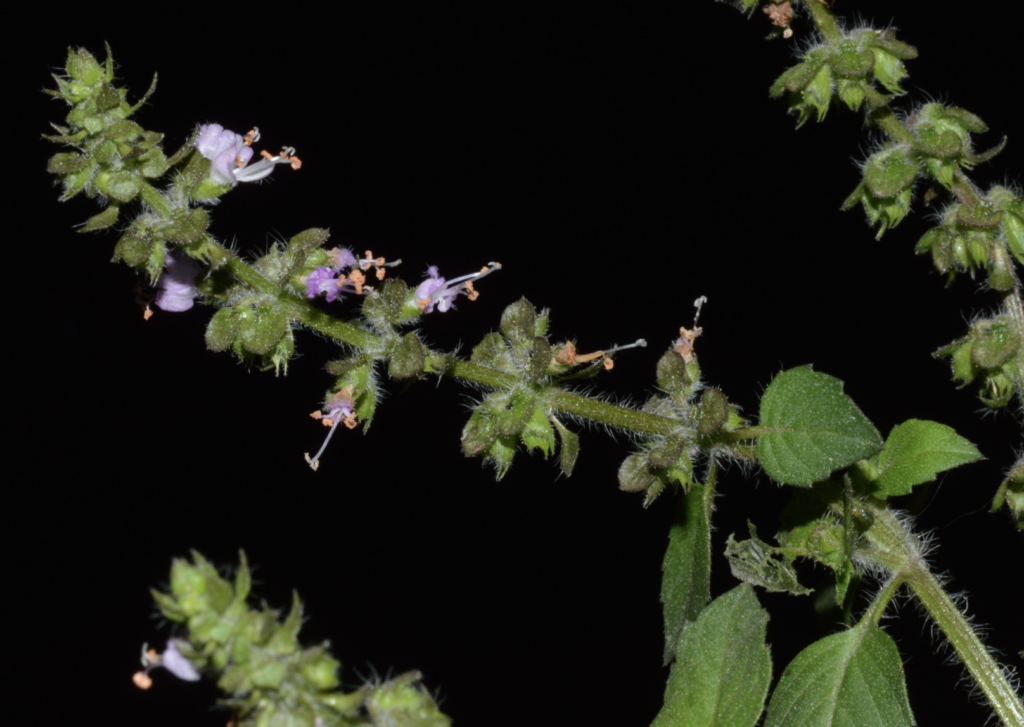
Ecotype of Ocimum bisabolenum with orange pollen – and with extremely long style – from Nepal. Gyaneswor. Katmandu. 1300 meters of altitude which is presented as an Ocimum americanum.
https://efloraofindia.com/2011/03/17/ocimum-basilicum-var-pilosum/
According to the paradigm of the genetic mythos…
the Ethiopian Besobila is a true species: Ocimum bisabolenum
In fact, it has been nearly a quarter of a century since the existence of Ocimum bisabolenum, as a species, was discovered by Sabine Eckelmann… but her work was in German, and no one, particularly in the seed production sector, really paid attention to her statements and discoveries.
Indeed, in her 2003 book – “Biodiversität der Gattung Ocimum L., insbesondere der Kultursippen” (Link) – Sabine Eckelmann analyzed 277 accessions from the IPK National Seed Bank in Gatersleben, Germany. She lists 10 ecotypes there, which are decidedly ecotypes of Ocimum bisabolenum with the classic Ethiopian Besobila chemotype: Bisabolene, Eucalyptol, Estragole, and Eugenol, with minor components including β-caryophyllene, α-bergamotene, and Ocimene.
These are the OCI 21, OCI 155, OCI 213, OCI 178, OCI 8, OCI 267, OCI 110, OCI 191, OCI 235, and OCI 103 accessions. These 10 accessions are labeled Ocimum americanum var. pilosum – and they all belong to the same clade according to all analyses.
I traced the historical record of 6 of these Ocimum bisabolenum ecotypes: OCI 21 = PI 652056. OCI 155 = PI 652059. OCI 213 = “Spice” (Richters Seeds). OCI 191 = “Spice” (Richters Seeds). OCI 178 (called “Holy Basil” from Redwood City seed company). OCI 267 = ecotype from Terre de Semences (Abundant Life Seed Foundation) coming, in 1997, from the Botanical Garden of La Gacilly in France.
Sabine Eckelmann discusses the various, highly fluctuating ratios of these 4 main components over two years of cultivation. In 2000, for example, the OCI 8 accession had up to 46% Bisabolene.
In fact, she mentions that in 1999, it was Eugenol or Eucalyptol that were predominant in OCI 8, OCI 103, OCI 178, and OCI 213, whereas in 2000, it was Bisabolene that was predominant in these four ecotypes. She also specifies that there is no information in the literature on the Bisabolene content of Ocimum americanum.
She mentions also that: «An ocimene content is positively correlated with a β-bisabolene content (r = 0.99) and generally also with a β-caryophyllene content (r = 0.6) in the essential oil. α-Bergamotene and β-bisabolene are positively correlated with estragole. An increase in β-bisabolene is also frequently associated with an increase in α-bergamotene. The color of the anthers differs only in O. americanum var. pilosum compared to the other accessions: they are red-orange rather than cream.»
Sabine Eckelmann clearly mentions the red/orange color of the anthers and the pollen of Ocimum bisabolenum.
Here are some of his comments to highlight:
The accessions of Ocimum americanum var. pilosum, which were already morphologically separate, cluster together with a bootstrap support of 98%, as a distinct group, separate from the accessions of Ocimum basilicum, Ocimum x citriodorum, Ocimum americanum var. americanum, and Ocimum minimum….
Ocimum americanum var. pilosum is genetically quite distinct from the species mentioned above, so it still needs to be examined whether it could be a separate species. (page 140).
According to Sabine Eckelmann, Ocimum bisabolenum is a tetraploid with 2n = 48. OCI 103 with 2n = 48+4. OCI 110 with 2n = 48+1. OCI 178 with 2n = approximately 44.
However, in addition to the grouping of accessions of Ocimum americanum var. pilosum, there is another interesting correlation between the results of the AFLP method and the morphological results: the grouping of the accessions from the Maldives. (page 140).
The same applies to Ocimum americanum var. pilosum: it is morphologically, chemically, and genetically so distinct from Ocimum americanum that it can be revised as a full species, namely Ocimum pilosum. (page 154).
It should be noted that in her work, Sabine Eckelmann refers to the species Ocimum citriodorum, which today is considered a synonym of Ocimum americanum var. pilosum. She correctly includes, in this species, non-lemon-scented ecotypes with a chemotype predominantly consisting of Estragole.
*******************
The Italian study (published in September 2024), “Characterization of the floral traits, pollen micromorphology and DNA barcoding of the edible flowers from three basil taxa (Lamiaceae)” performed genetic analysis of three accessions: “Blue Spice” (Ocimum bisabolenum), “Cinnamon” (Ocimum basilicum) and a lemon ecotype of Ocimum americanum pilosum. Link.
The results have been deposited in the Genbank database with the declared taxa, resulting taxon, origin, collection year, and accession numbers:
Blue Spice. Besobila. Ocimum bisabolenum: Link.
Cinnamon. Ocimum basilicum: Link.
Ocimum americanum pilosum: Link.
*******************
According to the Polish 2016 study “Genetic characterization of Ocimum genus using flow cytometry and inter-simple sequence repeat markers” – by Monika Rewers and Iwona Jedrzejczyk – the DNA content of the 5 GRIN/USDA accessions of supposed Ocimum tenuiflorum varies from 900 to 4489 Mbp. [52] .
Why? Because 3 of them are Ocimum bisabolenum and strictly not Ocimum tenuiflorum: PI 652059 from the Maldives (4372 Mbp), PI 652056 from Denmark (4489 Mbp) and PI 414205 from USA (4421 Mbp).
And, of course, this type of huge botanical error is transmitted by subsequent studies such as “Genetics, Cytogenetics, and Genetic Diversity in the Genus Ocimum”, in 2018, which states that accessions of Ocimum tenuiflorum had 4.5 pg/2C DNA content. [53]
If I may reiterate: four ecotypes MAP01627, MAP00160, MAP01656 and MAP01628 – from the seed bank of the University of Zagreb, Croatia – are presented, in the Croatian study “Molecular and chemical characterization of the most widespread Ocimum species” [60], as ecotypes of Ocimum tenuiflorum with a Bisabolene chemotype. In truth, they are accessions, for sure transmitted by the GRIN, of Ocimum bisabolenum – with high ratio of bisabolene. These four MAP accessions, from Zagreb, pertain to the following sequence: PI 414201, PI 414202, PI 414203, PI 414204, PI 414205, PI 652056 and PI 652059.
If I may reiterate. Here is what Noelle Fuller concluded in her 2018 study “Variation in Growth and Development, and Essential Oil Yield between Two Ocimum Species (O. tenuiflorum and O. gratissimum) Grown in Georgia” [63]: «Of the nine USDA accessions, seven (PI 652059, PI 652056, PI 414205, PI 414201, PI 414202, PI 414203, and PI 414204) were very similar to the commercial cultivar Kapoor. They displayed similar characteristics in phenology, had the same sprawling type growth habit, and exhibited correlative trends of higher yields and lower essential oil percent. » The commercial cultivar Kapoor, sold by Richo Cech, was indeed an ecotype of Ocimum bisabolenum – as all 7 GRIN accessions.
Readers are invited to check the photographs of the pressed plants, of these 8 ecotypes, at this Link provided by Noelle, as well as the video presenting her study in which, right at the beginning, one can clearly distinguish the various rows of Ocimum bisabolenum. Link
In fact, in her study “Yield and essential oils of holy basil (Ocimum tenuiflorum L., O. gratissimum L.): varietal comparison and analytical methods,” published in 2017, Noelle Fuller presents a detailed analysis of the essential oils of “Kapoor” and references PI 652059, PI 652056, PI 414205, PI 414201, PI 414202, PI 414203, and PI 414204 on page 79. The overall level of β-bisabolene and (E)-α-bisabolene varies between 30% and 36% for all these ecotypes. Thus, according to Noelle’s analysis, the major components are: Bisabolene, Eugenol, Methyl-chavicol, and Eucalyptol. The minor components are: β-pinene, β-ocimene, (E)-α-bergamotene, α-humulene, and germacrene D.
Moreover, the analyses presented by Noelle Fuller correspond perfectly to the analyses published by Aynalem Gebre, in 2023, about 49 ecotypes of Basil – of which 44 are misidentified as Ocimum basilicum when they are clearly ecotypes of Ocimum bisabolenum. [5] According to her results, the major components are: Bisabolene, Eugenol, Estragole, and Eucalyptol. The minor components are: β-pinene, β-ocimene, β-caryophyllene, and α-humulene. It is noteworthy that the presence of Methyl cinnamate varies from 1% to 13% – but has a ratio of less than 2% in about thirty ecotypes. According to this Ethiopian researcher: «β-bisabolene was the dominant compound in almost all analyzed accessions, except in five accessions (OB033, OB036, OB013, OB048, and OB047).» It should be noted that β-bisabolene was present in 44 of the 49 ecotypes analyzed and the other 5 had a Linalool chemotype – a minor terpene in Ocimum bisabolenum… which does not appear in Noelle Fuller.
Moreover, the analyses presented by Noelle Fuller correspond perfectly with those published by Klaudija Carović-Stanko in her study “Molecular and chemical characterization of the most widespread Ocimum species.” In her 2011 study, four ecotypes of Ocimum bisabolenum are analyzed, instead of Ocimum tenuiflorum, with their classic chemotype: bisabolene, eucalyptol, estragole, and eugenol. Link.
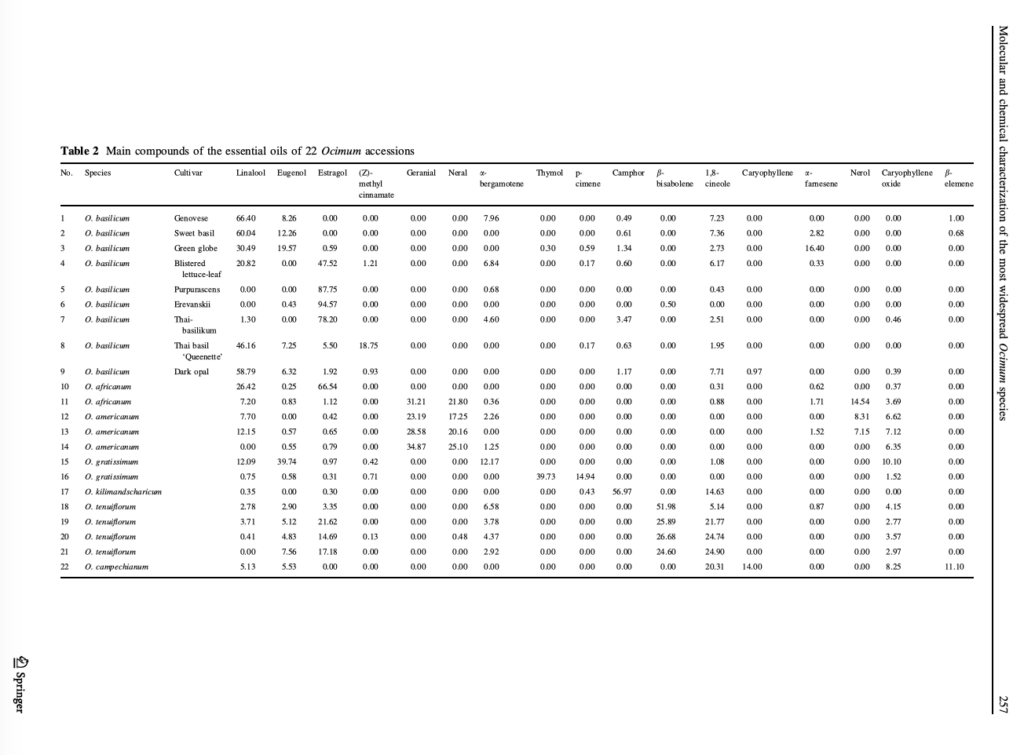
*******************
According to the 2013 Taiwanese study “Genetic diversity among Ocimum species based on ISSR, RAPD and SRAP markers”, the “Spice” and “Blue Spice” ecotypes constitute their own separate group. [8]
The same genetic study discovered that the ecotypes “Mrs. Burns”, and “Sweet Dani”, did not belong to Ocimum basilicum at all – as they had previously been characterized – but to Ocimum americanum sp. pilosum.
Namely, this Taiwanese study divide all analyzed ecotypes into four distinct groups:
The first group contained only Ocimum basilicum varieties.
The second group contained the varieties (or ecotypes) “Lemon”, “Lime”, “East Indian”, “Mrs. Burns” and “Sweet Dani”.
The third group contained the “Spice” and “Blue Spice” ecotypes.
The fourth group contained the species Ocimum tenuiflorum – green and purple forms.
Moreover, this Taiwanese study clearly affirmed that there was no difference between the ecotypes “Spice” and “Blue Spice”. Today, the Canadian seed company, Richters Herbs, which previously marketed both, now only markets “Spice”. [54]
*******************
According to the 2018 study, “Population structure, genetic diversity and downy mildew resistance among Ocimum species germplasm” [23]: «Three F1 progenies of k3.1 accession 139 (“Spice”) hybridized with Ocimum basilicum k1.1 accessions – namely, 22 (RUSB_09), 6 (“DiGenova”) and 47 (MRI) – form a well-supported clade (0.938) with accessions 135 (PI 414201) and 136 (PI 414203). Sterility among these progeny suggest a major reproductive barrier between commercially important Ocimum basilicum k1.1 accessions and this least basal, highly supported (1.00) k3 clade.»… «Two additional USDA/GRIN accessions, PI 414201 (acc. 140) and PI 414203 (acc.141), are included in this clade and parentage is unknown.»
In this study, PI 414203 is named “Spice x” – O. tenuiflorum/O. americanum x. [55]
This study states – and this is very valuable information – that: «The k3.1 cluster includes 7 phenotypically indistinguishable accessions sourced from commercial seed companies and the USDA-GRIN. This cluster is highly supported (1.00) and evidently an autonomous population».
And what are the 7 accessions making up this “autonomous population”: “Blue Spice”, “Blue Spice F1”, “Spice”, PI 414204, PI 414205, PI 652056, PI 652059 – namely ecotypes of Ocimum bisabolenum. And, this, in addition to the ecotypes PI 414201 and PI 414203 – which could be, according to the authors, F1 hybrids between “Spice” (Ocimum bisabolenum) and Ocimum basilicum – which are included in the clade.
The authors of this study intended to cross-pollinate the temperate Tulsi, called “Spice”, with the three varieties of Ocimum basilicum mentioned above. These researchers have even tried to cross-pollinate the Tulsi “Spice” with the only variety of Ocimum basilicum totally resistant to mildew, namely Mrihani… without success because the offsprings were totally sterile.
All these ecotypes of Ocimum bisabolenum are all strictly resistant to Basil blight.
In conclusion, according to this study, a pretty coherent genetic clade is constituted by the following ecotypes of Ocimum bisaboleneum: “Blue Spice”, “Blue Spice F1”, “Spice”, PI 414201, PI 414203, PI 414204, PI 414205, PI 652056, PI 652059.
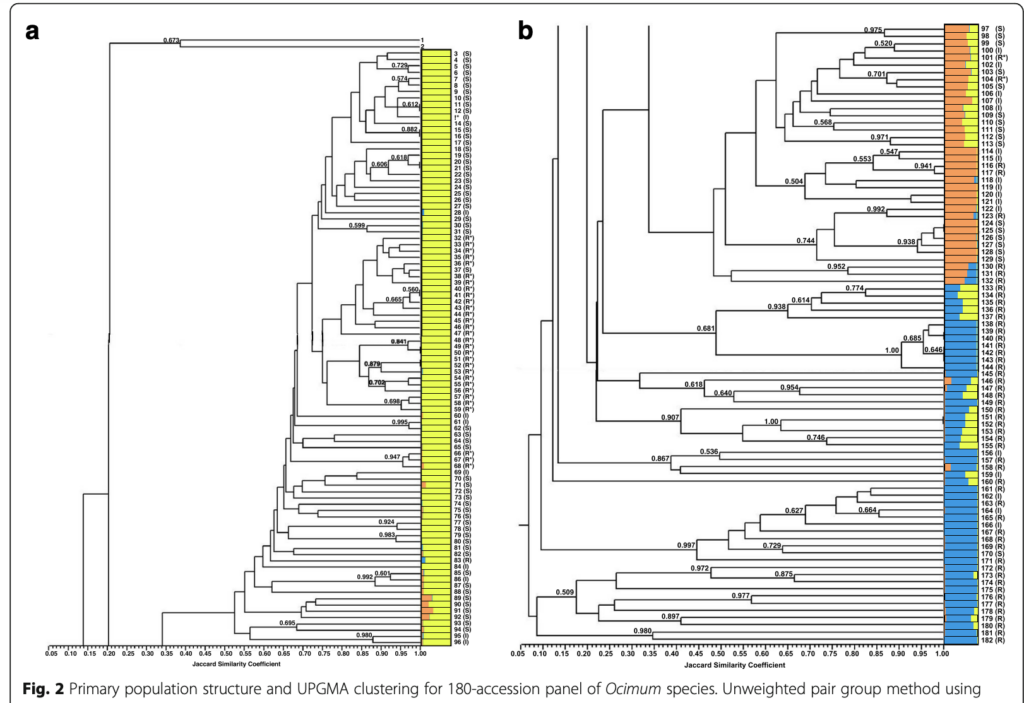
Moreover, above, n°133 is named “Spice F1/Spice x”; n°135 is PI 414201.
And n°136, PI 414203, is named for what it is “Spice x”!
*******************
According to the genetic 2018 study, “Product authenticity versus globalisation – The Tulsi case”, [57] there is a huge problem of misidentification with an ecotype named “Vana 8258” – a “Tulsi” distributed by the Pukka society in UK… which has “trained Ayurvedic herbalists”… for botanical identification… supposedly. The researchers of this study point out that two commercial ecotypes of Ocimum gratissimum and “Vana”, arrived from Milan, and that one of them gave them some trouble with identification.
Why supposedly? Well, because the trained Ayurvedic herbalists are, strictly mistaken… as Ocimum bisabolenum is everywhere, in seeds for sale, on the web markets – presented as Ocimum sanctum, Ocimum americanum, Ocimum kilimandscharicum, etc.
The name “Vana” would suggest, normally, that it is an Ocimum gratissimum… although this name is, sometimes, used for Ocimum tenuiflorum in India.
This is the case, in this study, but only for the picture because in the text, it is considered as Ocimum americanum!
The problem is that the flower of “Vana 8258” is mauve with white pollen – meaning neither from Ocimum tenuiflorum nor from Ocimum gratissimum which, both, have yellow pollen – and it looks like it could be an ecotype of Ocimum bisabolenum… but with white pollen. Caveat. The 10 mm scale, for the flowers, is totally wrong.
According to the 2023 study “A taxonomic review of the genus Ocimum L. (Ocimeae, Lamiaceae)” [68], «the species O. tenuiflorum Vana 8258 is misidentified, the correction is given as O. americanum ».
So, it could be, with its white pollen, an ecotype of Ocimum americanum but, on the haplotype chart, “Vana 8258” is totally separated from Ocimum americanum and closer to Ocimum kilimandscharicum. Look at the green arrow on the red point.
Figure it! Well, in fact, in my first monograph, it is exactly what I wrote. «Today, if I were asked to determine the species of Ocimum closest to the temperate Tulsi, Ocimum bisabolenum – among the most known worldwide – I would answer, without a doubt, Ocimum kilimandscharicum, the Tulsi of Kilimanjaro… from a sensory and intuitive point of view.»
According to this study, also, there is a huge problem, in the United Kingdom, with the denomination “Rama Tulsi” as “Tulsi”, normally, in India, could be “Rama Tulsi”, “Krishna Tulsi”, “Vana Tulsi”…
The mixing of “Rama Tulsi”, in the United Kingdom, is totally highlighted in a 2022 study, “The Cultural and Commercial Value of Tulsi (Ocimum tenuiflorum L.): Multidisciplinary Approaches Focusing on Species Authentication” [58]. According to the authors: «Findings from the interviews for this research suggest Rama Tulsi was easier to germinate and grow as a houseplant in the UK in comparison to Shyam Tulsi.»
Why the alternative “Rama Tulsi” is so easy, for the normal gardeners, to grow, from seeds, in cold and wet climates of UK, in comparison with the real tropical Ocimum tenuiflorum? Well, very simply, because, this alternative “Rama Tulsi” is, in truth, the temperate Tulsi, Ocimum bisabolenum – which thrives in the cold!
In fact, many seeds of “Rama Tulsi” sold in the United Kingdom are, very simply, seeds of the Ethiopian Besobila, Ocimum tenuiflorum.
You may check by yourself, on the web, doing the research, with the images.
Why? Because, for example, for so many years, it was sold under this name, “Rama Tulsi”, by Richo Cech (Strictly Medicinal Seeds) in USA – who was very influential in the misidentification of diverses species of Ocimum. Richo has this name, “Rama Tulsi”, for a long time, until 2010 (Horizon Seeds)… when he shifted to “Kapoor Tulsi”, Ocimum kilimandscharicum.
According to the conclusions. « O. basilicum, O. americanum, O. x africanum, and O. kilimandscharicum formed one common clade (97%), ‘Vana Tulsi’, although slightly (but significantly) different, was clearly located in this clade, but significantly (98%) separated from the other accessions….
Vana Tulsi, belongs to haplotype I, although it remained separate from the remaining members of this clade: it cannot be assigned to any of the four recognised species in this cluster.
While the essential oil pattern of ‘Vana Tulsi’ clearly differed from the tested accessions of O. tenuiflorum including ‘Rama Tulsi’ and ‘Krishna Tulsi’, it was also distinct from O. basilicum and O. americanum (that were also variable).
While O. basilicum and O. americanum possess a well-developed upper lip, this organ is shorter in O. campechianum, O. tenuiflorum, O. gratissimum, as well as in the validated specimen of ‘Vana Tulsi’ in our sample. »
To sum up this botanical dilemma, their genetic conclusions are very clear: “Vana 8258” is a true species as it cannot be assigned to any of the four recognised species in this cluster: Ocimum basilicum, Ocimum americanum, Ocimum x africanum and Ocimum kilimandscharicum.
“Vana 8258” is, clearly, an ecotype of Ocimum bisabolenum.
May we draw, moreover, existential conclusions as to the status of Ocimum bisabolenum in the gardens of United Kingdom?
Firstly, If Pukka, in UK, sells organic dry leaves of ecotypes of Ocimum bisabolenum – under the names “Rama Tulsi” or “Sacred” or whatever – it is, surely, because the British organic farmers, of the countryside can produce, “locally”, this temperate Tulsi, outside in the fields, and without excessive heat – to the contrary of Ocimum tenuiflorum which is a tropical or sub-tropical species.
I introduced, and distributed widely, in France, and in Europe, Ocimum bisabolenum in 1994, on the seed market, and we have been selling its organic seeds for 30 years – with Terre de Semences and, then, with Association Kokopelli.
Secondly. If all the seed companies, in UK, in Europe, in north-America, in Australia… are selling, to the gardeners, seeds of Ocimum bisabolenum – under whatever names: “Blue Spice”, “Spice”, “Rama Tulsi”, “Sacred Tulsi”, “Temperate Tulsi”, etc, and under whatever species’s names – it is because the objective of a seed-company is to sell seeds – very simply. As to their customers, the gardeners, they prefer to sow seeds of “Sacred Basil/Tulsi” which germinate easily and grow into beautiful plants even when the weather is not so hot. Thus, the gardeners prefer to purchase seeds of Ocimum bisabolenum.
May the “botanical experts” of the Kew Botanical Garden dive deeply into the living pools of the Real Life? Because, as Alan Paton wrote to me, in May 2017: « I’m sorry we have very few basils in cultivation at Kew. »
Hundreds of seed-companies have been selling seeds of Ocimum bisabolenum – all over the world and for 40 plus years – in guise of “Sacred Tulsi”. Just check by yourself with the pictures on the web: strong architecture, red-brick pollen, a bluish aura… Ocimum bisabolenum may be spotted from faraway!
Why? Because the majority of serious and authentic gardeners know that, in a temperate garden – especially with a very changing atmosphere under the impact of a Great Solar Minimum – Ocimum tenuiflorum can not rival with Ocimum bisabolenum if we speak about bio-mass production. I would, even, say that these 2 species are, each, on a side of the spectrum of bio-mass production: very high for Ocimum bisabolenum and very low for Ocimum tenuiflorum. Do you wish to bet?
This year, I transplanted young seedlings of Ocimum bisabolenum (5/7 cm) around August 30th. Six weeks later, the first seeds are already ripe and the biggest plants have taken a space of 55 cm by 55 cm and 40 cm high – with a very structured architecture… although we are well in the fall.
Ocimum tenuiflorum is the Queen of the Sacred Tulsis in India… while Ocimum bisabolenum is the Queen of the Sacred Tulsis in Europe and north America…. and even further.
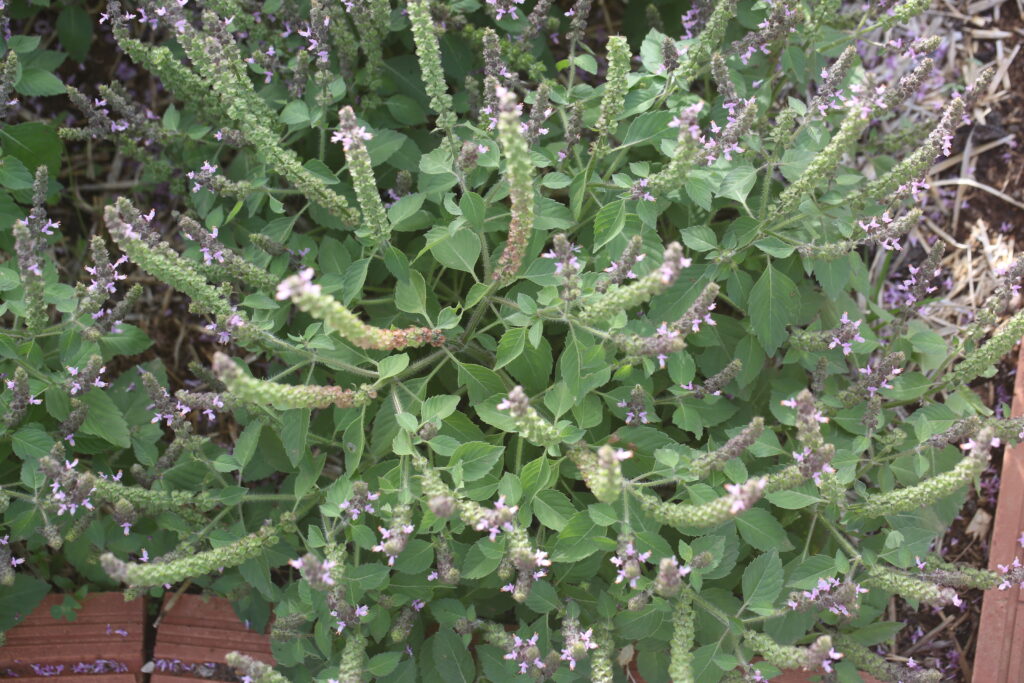
*******************
In Ethiopia, in June 2024, researcher Aynalem Gebre Gossa – from the Ethiopian Institute of Agricultural Research – published a new study on the genetic analysis of 62 Ethiopian Basil ecotypes mistakenly considered as all belonging to the species Ocimum basilicum. “Genetic diversity and population structure of Ethiopian basil (Ocimum basilicum L.) accessions using DArTseq markers.” [20]
According to the authors’ conclusions, “structural analysis uncovered the existence of two ancestral populations within the basil accessions, which was confirmed by clustering”. In other words, these 62 Ethiopian basil plants were classified in two genetically different groups… with two distinct ancestral lineages.
And why is that? Because they are, in fact, two different species. In fact, out of 62 accessions, 5 belong to one genetic group, which I identify as Ocimum basilicum var. thyrsiflorum (“Ajuban” or “Ashkuti”), and 57 to another genetic group, which is clearly Ocimum bisabolenum.
According to the authors. « Between populations, the FST value varied from 0.02 to 0.13, suggesting minimal to moderate differentiation. A moderate level of differentiation was observed between accessions collected from Amhara and Sidama (0.13), Harari and Sidama (0.12), Sidama and SNNPR (0.12), Amhara and SNNPR (0.10), SNNPR and Tigray (0.10), Harari and SNNPR (0.10), Amhara and SNNPR (0.10), SNNPR and SWE (0.10), Harari and SWE (0.10), Amhara and SWE (0.08), Sidama and Tigray (0.07), Oromiya and Sidama (0.06), Harari and Tigray (0.06). The populations from Amhara and Tigray (0.05), Harari and Oromiya (0.05), Oromiya and Tigray (0.05), SWE and Tigray (0.04), and Oromiya and SNNPR (0.02) showed minimal differences from one another. »
Aynalem Gebre Gossa never replied to my letter of August 2022, in which I proved to him that, according to his study of 2023, if 44 of its 49 ecotypes of Ethiopian Basils had considerable levels of Bisabolene, it was because they were not ecotypes of Ocimum basilicum var. thyrsiflorum but, rather, of Ocimum bisabolenum. According to this researcher: β-bisabolene was the dominant compound in almost all the accessions analyzed, except in five accessions (OB033, OB036, OB013, OB048 and OB047). [5]
*******************
According to a 2018 analysis, “Chemical composition, genetic diversity, antibacterial, antifungal and antioxidant activities of camphor-basil (Ocimum kilimandscharicum Guerke)” [81], covering 13 ecotypes of Ocimum kilimandscharicum, one of the ecotypes is wrongly considered to be Ocimum kilimandscharicum, OK13 , whereas it is in fact an ecotype of Ocimum bisabolenum. This ecotype, moreover, is native to Uttarakhand, and I have already reported the abundant presence of Ocimum bisabolenum in this mountainous state of northern India.
According to the authors: All populations of O. kilimandscharicum bear almost common characters, except OK13 which was morphologically distinguishable from all other populations. OK13 possessed purple flowers with obtuse bract and dark green leaves with deeply serrate margin, while all other populations possessed white flower with acute bract and pale green leaves with serrate margin.
It has 26.3% bisabolene and, what’s more, its essential oil content is the lowest at 0.15% – in line with the average for this species. Its chemotype is considered to be eugenol / estragole / (E)-α-bisabolene / β-bisabolene / eucalyptol (phenylpropanoid/sesquiterpene) – thus forming its own cluster.
The composition of the essential oils of the twelve populations (OK1 to OK12) is dominated by monoterpenoids (92.9-97.7%), while the essential oil of this ecotype of Ocimum bisabolenum is characterized by higher levels of sesquiterpenoids (39.6%) and phenylpropanoids (35.0%).
The other main components of this ecotype of Ocimum bisabolenum are: (E)-β-Ocimene, (E)-Caryophyllene, (E)-β-Farnesene and Germacrene D.
According to this study, the essential oil of this ecotype of Ocimum bisabolenum demonstrated a very high antioxidant activity – and higher than that of the other 12 ecotypes ofOcimum kilimandscharicum.
On the other hand, in terms of bio-mass – and canopy – those of Ocimum kilimandscharicum are around twice as abundant as those of Ocimum bisabolenum.
And that’s putting it mildly, because the total phenolic content of Ocimum bisabolenum is calculated at 735.76 mg GAE g-1, while that of the 12 other Ocimum kilimandscharicum ecotypes ranges from 4.47 to 22.47 mg GAE g-1. In other words, 150 times more at most!
As for the FRAP test, it’s 934.64 mM Fe (II) g-1 for Ocimum bisabolenum and 30 to 76 mM Fe (II) g-1 for the 12 other Ocimum kilimandscharicum ecotypes. In other words, 30 times more at most!
In addition, its essential oil showed good activity against E. coli (ZOI: 11.0 ± 1.00 mm), but moderate activity against S. epidermidis (ZOI: 10.0 ± 1.00 mm), E. faecalis (ZOI: 8.66 ± 0.57 mm), S. aureus (ZOI: 7.66 ± 1.15 mm), and M. smegmatis (ZOI: 5.66 ± 0.57 mm).
In addition, it showed very good activity against C. albicans (ATCC) (ZOI: 18.33 ± 0.57 mm; MIC: 1.73 ± 0.60 μL mL-1; MFC: 3.15 ± 1.42 μL mL-1) and exhibited moderate activity against C. albicans (clinical isolate) (ZOI: 14.33 ± 1.15 mm; MIC: 4.16 ± 0.00 μL mL-1 ; MFC: 8.33 ± 0.00 μL mL-1 ) and C. kefyr (ZOI: 9.66 ± 0.57 mm; MIC: 8.33 ± 0.00 μL mL-1 ; MFC: 12.50 ± 5.89 μL mL-1 ).
Genetically speaking, it is, of course, totally isolated from the other 12 ecotypes of Ocimum kilimandscharicum, and genetics enthusiasts are invited to refer to the relevant sections of this study.
And the authors point out that the most distant genotypes are OK2 and the Ocimum bisabolenum ecotype with the lowest similarity index (0.30).
*******************
According to the 2003 study, “Genetic Diversity of Basil (Ocimum spp.) based on RAPD Markers”, [188] everything described in this study about Ocimum tenuiflorum concerns an ecotype called “Sacred”, distributed by Nichols Gardens, and whose identity is clearly that of a temperate Tulsi, Ocimum bisabolenum – according to the photographs, and the description, of this seed company, today, despite the fact that it is presented as an Ocimum tenuiflorum. [57]
In this study, it is noted that although the species Ocimum tenuiflorum and Ocimum selloi share the same botanical section, they are only 36% similar – based on their genetic analysis – because they are dealing with Ocimum bisabolenum.
We can therefore deduce that Ocimum bisabolenum can not be placed in the same botanical section as Ocimum tenuiflorum and Ocimum selloi – a fact that is obvious to any astute botanist or observer.
It’s worth noting that, in the same study, ecotype Ot21 – namely Ocimum bisabolenum PI 414204 – then presented as Ocimum americanum var. pilosum, is completely isolated in the similarity chart – as is the so-called Ocimum tenuiflorum at the other end of the chart.
*******************
In conclusion of all these genetic analysis. It is pretty obvious that Ocimum bisabolenum – under the guise of fancy names, under the guise of true names from India and, more problematically, under the guise of all the main species of Ocimum – constitutes its own genetic entity, its own species.
Thus, today, we can classify, under the Ocimum bisabolenum umbrella, the following ecotypes: the GRIN/USDA PI 414201, PI 414202, PI 414203, PI 414204, PI 414205, PI 652056, PI 652059.
I’ve managed to trace the history of the ecotypes distributed in the USA by GRIN/USDA. The PI 414201, PI 414202, PI 414202, PI 414204 and PI 414205 series were registered in the GRIN seed bank on July 23, 1975. These 5 ecotypes come from Maryland (Division of Tobacco, Medicinal and Special Crops, Plant Industry Station, Beltsville). The first 4 references were registered, between 1953 and 1956, under the name Ocimum gratissimum and the last, in 1956, under the name Ocimum kilimandscharicum [72].
By the way, it seems that the supposed Brazilian accessions of Ocimum gratissimum, analyzed by Vieira and Simons, in 2000, [24] would have come from USA and would be, very simply, Ocimum bisabolenum as per their very high ratio of Bisabolene: 41,52% et 37,30% for two of them.
In fact, Helen Darrah makes it clear that of the three identical ecotypes of Spice Basil, one came from the West Indies – namely, the GRIN PI 414204 ecotype from the West Indies, according to the Ames Division of Tobacco.
PI 652056 (source IPK OCI 21/93) and PI 652059 (source IPK OCI 155) were received on June 21, 1996 from the IPK in Germany (Leibniz-Inst fur Pflanzengenetik und Kulturpflanzenforschung Genebank). PI 652056 from the Maldives (via the Botanical Garden in Copenhagen, Denmark) and PI 652059 from the Maldives (Kondey Island, Huvach Atoll).
Then, “Blue Spice”, “Spice” and “Vana 8258”.
Then, a fair number of commercial offers for seeds of “Rama Tulsi” concern, in fact, Ocimum bisabolenum. The first one, on line, being Amazon – with pictures of the Besobila. [59]
That situation has lasted for many years as, already, in 2016, I was telling Richo Cech he was wrong to use this denomination – for seeds of Ocimum bisabolenum.
Then, a fair number of commercial offers for seeds of “Kapoor Tulsi” concern, in fact, Ocimum bisabolenum. As Noelle Fuller was commenting, in her 2018 study “Variation in Growth and Development, and Essential Oil Yield between Two Ocimum Species (O. tenuiflorum and O. gratissimum) Grown in Georgia” [63]: «The Kapoor cultivar is the most common type of holy basil sold by seed suppliers in the United States.»
So why “Kapoor Tulsi”? Because Richo Cech, himself, was selling it under this name at one point…
Finally, the quasi majority of all the seeds sold for “Sacred Basil”, “Sacred Tulsi” and “Holy Basil”, for the past 50 years, in Europe and north-America are seeds of Ocimum bisabolenum. And elsewhere, for example, in Argentina. [61]
Indeed, at least 50 years as Helen Darrah, as early as 1974, gave the denomination “Spice Basil. Ocimum sanctum” – in her essay “Investigation of the Cultivars of the Basils (Ocimum)” published in the New York Botanical Garden Press – and mentioned that it was the name given by many American growers. Many… because this Besobila ecotype had already been officially registered in 1953 at the Tobacco Office of the Ames Experimental Station in the USA.
In this essay, she described Ocimum bisabolenum: « The plants have slender inflorescence with lavender corolla, orange stamens and slender open branching, reaching a height of 22 to 25 inches at maturity… Odor strong pungent, like clove. Seeds of the green ovate leafed form are black ovoid dull to semi-lustrous, finely pitted, base grayish prominent to absent, size variable 1.1 to 1.4 mm long by 0.7 to 1.0 mm wide, mucilage scanty »
Some companies (organic or not) sell seeds of Ocimum bisabolenum, in USA, by the kilo – and there are around 1 700 000 of them in 1 kilo.
For example, Johnny’s Seeds, in USA, is selling organic seeds of Ocimum bisabolenum by 5 pounds (2,3 kg) for 1752 dollars. [64]
And, moreover, Johnny’s Seeds gives it the name “Kapoor Tulsi (Holy Basil)” – which is Ocimum kilimandscharicum – but with the species name “Ocimum americanum”!!! A double error!
This botanical circus has been going on for over 70 years in fact – since 1953, the year the PI 414201 ecotype was officially introduced – and everyone’s sleeping soundly!
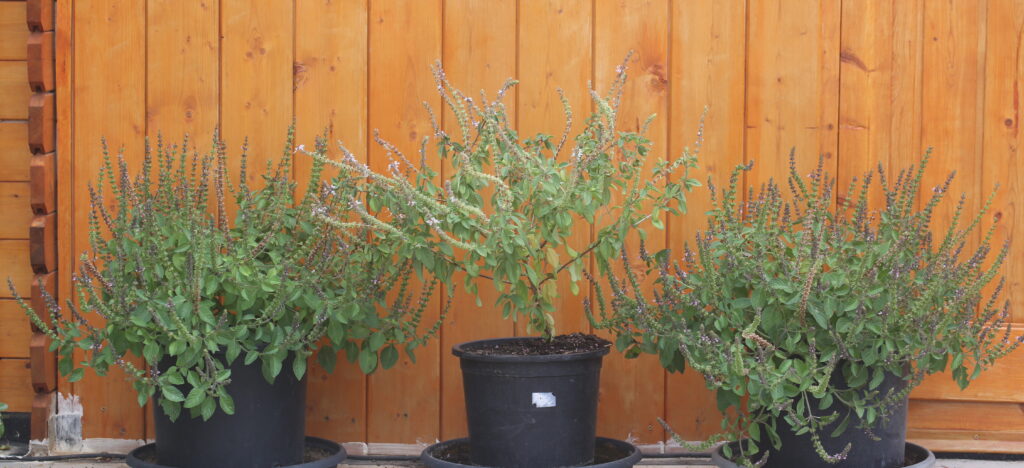
*******************
On November 1, 2024, as I plunged into dozens of boxes containing our former library of several thousand books – which we had stored, in a garage in France, before returning to the USA in 2004 – I discovered the 1996 book entitled “Basil. An herb Lover’s Guide” – written by Thomas DeBaggio et Susan Belsinger. On pages 88 and 89, this book presents two ecotypes of Ocimum bisabolenum – with illustrations that correctly depict the leaves of this species:
The first is presented as “Spice”, Ocimum americanum. Selon les auteurs: « A subject of confusion in the seed trade, this basil is hardly ever offered under its proper name but as “Sacred” or “Holy” basil. While sacred or holy to some, it is not the Hindu Holy basil (O. tenuiflorum formerly called O. sanctum). Its misidentification may have occured during the circuitous route it took to reach the mainstream.
Richard Dufresne (1943-2018) transmitted the seed to Park Seed Company who introduced it to a larger audience. Dufresne says he got the seed nearly twenty years ago from Heinz Grotzke, the founder of Meadowbrook Herb Garden in Rhode Island. Grotzke called his seed “Holy” basil and said it had come from a German source.
Leaves exude a musky sweetness that fades to cinnamon and spice, with a slightly pungent note. Perfume flavor fills the mouth at first bite, followed by mint, and is hot on the tongue».
According to the description, this is clearly an ecotype of Ocimum bisabolenum with mauve flowers – and therefore orange pollen.
Richard Dufresne (1943-2018) was one of the driving forces behind the introduction of Ocimum bisabolenum to the USA around 1976, when he discovered it on Heinz Grotzke’s biodynamic farm, Meadowbrook Herb Garden, which he obtained from Germany. He was also an expert on the Salvia genus and was known as the “Sultan of Salvia”.
The second is presented as “Sacred”, Ocimum americanum. Selon les auteurs: «This basil was a Richter’s introduction before 1979 and we found no others like it in our trials. Conrad Richter says the source of the firm’s seed was in India but this basil differs markedly from O. tenuiflorum, commonmy called “Holy” in the United States and “Tulsi” in northern India… “Sacred” basil was the only plant, in our trials, so intent on flowering that heavy pruning could not induce it to produce more foliage. ».
According to the description, this is clearly an ecotype of Ocimum bisabolenum with white flowers – and, therefore, white pollen – and, correctly characterized, as a heavy seed producer.
For these two ecotypes of Ocimum bisabolenum, the analysis of essential oils is not presented. Only a few of the species’ usual components are listed: eugenol, methyl-chavicol, 1-8-cineol, caryophyllene, cadinene. Both ecotypes are mentioned as being, correctly, very early-flowering.
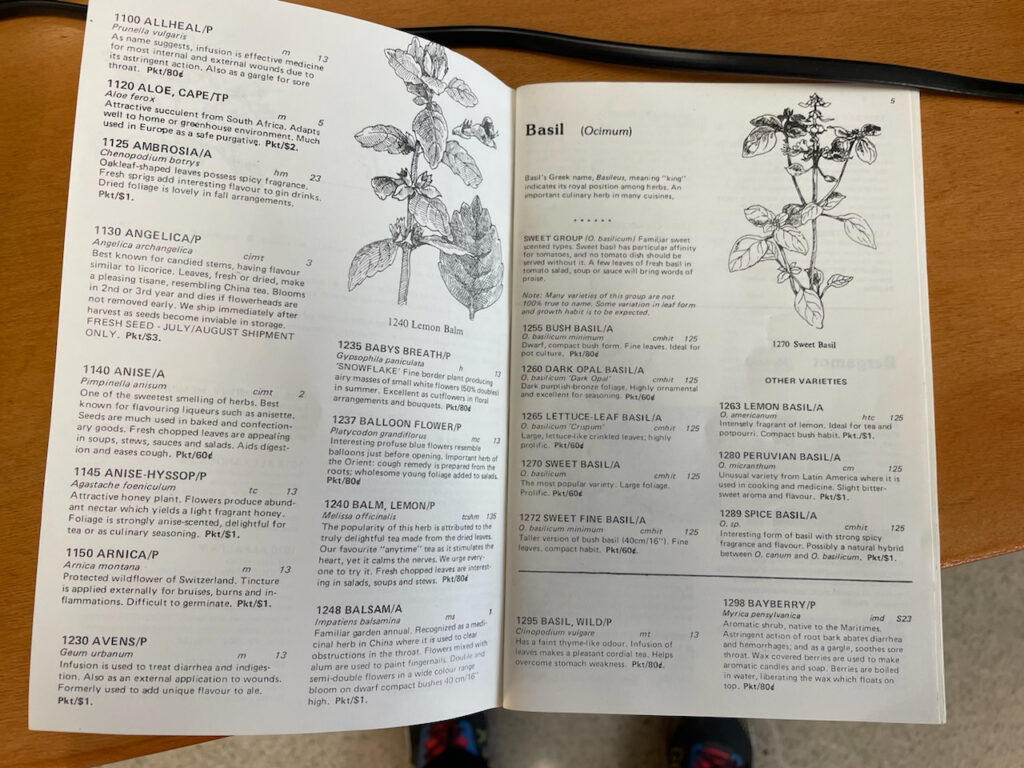
Botanical description of Ocimum bisabolenum by the French National Conservatory of Medicinal Plants in Milly la Forêt
Botanists seeking a full botanical description of Ocimum bisabolenum are invited to consult the impressive and excellent document from the Conservatoire des Plantes Médicinales, Milly la Forêt, entitled “La diversité du genre Ocimum dans les collections du CNPMAI ” – which comprises 286 pages. Just search for the term “Spice” in the document.
It’s a great pleasure to see that French botanists have taken it upon themselves to botanically describe the Ethiopian Besobila, Ocimum bisabolenum, because the chaos has been going on for over 70 years: Hélène Darrah first mentioned it, in 1974, but the Division of Tobacco in Ames, Iowa, as early as 1953, had already given Besobila two incorrect species names, Ocimum gratissimum and Ocimum kilimandscharicum.
This document also includes botanical keys for differentiating Ocimum species and cultivars, as well as keys for determining their seeds.
I would like to make a few clarifications regarding the specific determination of certain ecotypes presented in this document – lemon and anis, for example – but that is not the subject today.
In this very detailed document, the Conservatory presents, in 3 pages, the ecotype of Ocimum bisabolenum known as “Spice” – or “Blue Spice” – described with its orange anthers and a strictly correct picture. Just from the calyx’s drawing, it is clear that Ocimum bisabolenum is a species in its own.
On the other hand, the assessment of this species as having a “vomit-like odor” is deeply incorrect and must have been made by someone suffering from a few olfactory problems! The many Ethiopian ethnic groups, for whom Besobila is THE daily plant, would be scandalized, to say the least!
The document presents it, moreover, as a Ocimum sp. so as not to take any risks. This determination must be relatively new, as a very recent study, from Italy, presents the “Blue Spice”, which they received from the Conservatoire de Milly la Forêt, as an Ocimum basilicum. [2]
Caveat. In the table presenting the various essential oils of different Ocimum species, two analyses are proposed for “Spice”. One corresponds to the normal chemotype of Ocimum bisabolenum: namely, α-Bisabolene (12.28%), β-Bisabolene (16.38), α-Bisabolol (14.3%) and then, Eugenol, Eucalyptol, Methyl-chavicol, β-Ocimene.
The second (from a very old 1991 French ITEIPMAI analysis) has nothing to do with it, since it contains 31% Eugenol, 16.8% Geranial, 8.35% α-Terpinene and, if the analysis has been carried out correctly, it is highly probable that the name “Spice” corresponds to another species.
As a brief conclusion, it should be noted that the proposed determination key for Ocimum species places Ocimum bisabolenum just before Ocimum basilicum – i.e. in very close morphological proximity.
This may explain why Ethiopian botanists have great difficulty distinguishing the two species when they talk about Besobila – even though their second ecotype is Ocimum basilicum var. thyrsiflorum , known as “Ajuban” or “Ashkuti”.
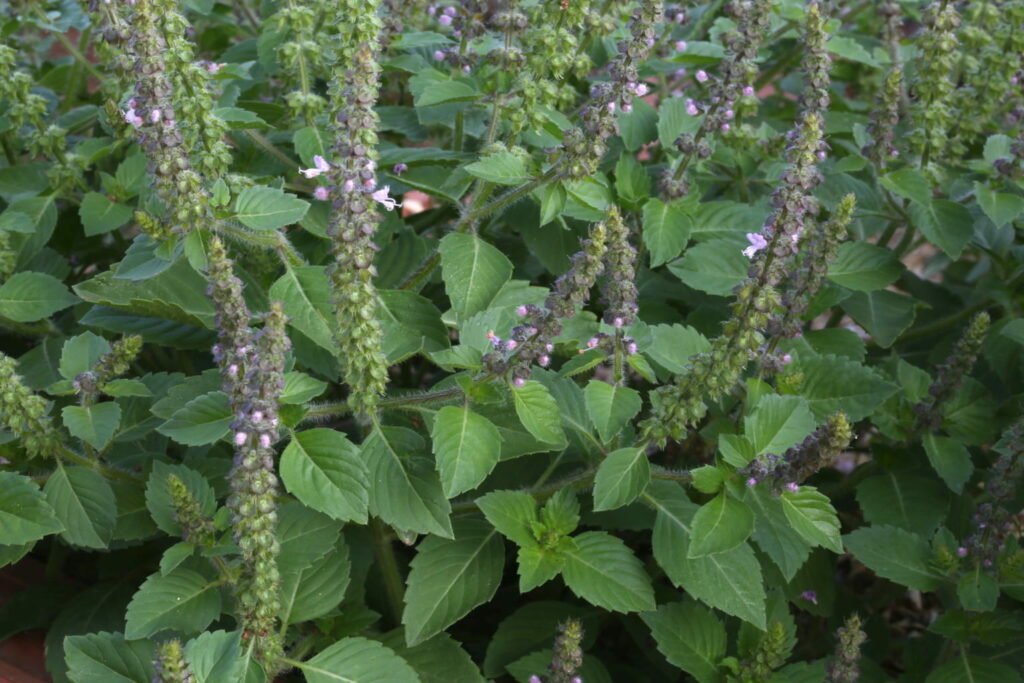
What the Fake is Going on in the Ocimum world?
May I state, squarely, from the outset, that I deem that my identification, in August 2022, of the Ethiopian origin, and of the species status, of the temperate “Sacred Tulsi”, Ocimum bisabolenum, ranks among the most impressive discoveries, in the Ocimum world, of this 21st century?
But who cares? Who cares «when the leading experts in the field turn their head and pretend that they just don’t see»?
My first questions to Alan Paton, James Simons, and the like… just asking for a friend! Did you ever grow, with your own physical body tilling the soil, the temperate “Sacred Tulsi”, Ocimum bisabolenum, in a real garden? Did you ever follow, everyday, watering the plants for months long, and all year along, the processes, and patterns, of growing which characterize this beautiful nutritional and medicinal species? Have you ever taken care of a few plants of Ocimum bisabolenum winter-flowering and over-wintering, on your balcony, with -7°C temperatures? Have you ever noticed that Ocimum bisabolenum is the only Basil species which perfumes the garden when the plants come into contact with water, releasing, immediately, volatile substances with a very fragrant and unique aroma? I did…. Since 1994.
Did you ever make a cordial – with an organic 45° alcool – with the leaves, stems and flowers of Ocimum bisabolenum… brewing for a few months? I do it, every year, and I enjoy it every night – for “spicy” dreams!
And, as a matter of Facts and Feats, I would say the same about the introduction, by Richo Cech, of the “Mrihani” ecotype of Ocimum basilicum, (from Zanzibar), which is the only ecotype, or cultivar, of this species, to be, strictly and totally, resistant to the basil mildew – as, so far, no other one, really, has made itself known.
It is also, a very impressive African discovery about this basil from Zanzibar, “Mrihani” – “Rehan”, which means Basil in Arabic. Richo found this basil growing on the north end of Pemba Island in the Zanzibar Archipelago.
And thanks to “Mrihani” and to Rutgers University – and thanks to James Simon who was, thus, too busy to answer my mails! – and three other universities, 4 different new cultivars of Ocimum basilicum have been introduced which are fairly resistant to the basil mildew, Peronospora belbahrii, if not totally: “Devotion”, “Passion”, “Obsession” and “Thunderstruck”. [56]
Unfortunately, the botanical explorer Richo Cech, of Strictly Medicinal Seeds in southern Oregon – whom I know as we were neighbors for many years – has been very active in the mis-identification of some of the Ocimum ecotypes, or species, he was selling in his seed catalogue… for some years. Although he corrected some of the botanical errors I pointed to him… today, the temperate “Sacred Tulsi” is still presented, on his website, as Ocimum africanum.
This is pure non sense, and laziness – because Richo knows pretty well my work – as, in that, unfortunately, he is following the, ill-fated, ideological line chosen by Alan Paton and the Kew Botanical Garden – in total contradiction, by the way, with the GRIN/USDA… which labels its diverse ecotypes as Ocimum tenuiflorum. And I wholly disagree… about both! What a mess! Are we speaking of botanical science?
First point. Although the Kew Botanical Garden wrote, in 2017, that «Lemon-scented cultivars are usually the result of crosses between O. basilicum and O. africanum»… let it be clear that: Ocimum africanum = Ocimum x. citriodorum = Ocimum americanum sp. pilosum. Cf. my monograph. [76] for serious botanical precisions and qualifications. The Besobila is, strictly not, an African form of Ocimum americanum sp. pilosum… which would have been lost in the mountains of Ethiopia, for millennia, without any species cross-communications… and fusions.
Second point. In 30 years of professional organic seed production, we NEVER saw any natural and spontaneous hybrids, meaning fertile crosses, between Ocimum basilicum and Ocimum americanum. I do mean that our growers have been growing seeds of Ocimum americanum and Ocimum basilicum – as well as Ocimum tenuiflorum, Ocimum gratissimum and Ocimum kilimandsharicum – in very close proximity, of a few meters, without ever witnessing any crosses. If that were that easy to cross these two species, it would have been done, a long time ago, at Rutgers or Bar-Ilan Universities – to transfer the mildew resistance of certain ecotypes of Ocimum americanum to Ocimum basilicum. N’est ce pas?
Third point. The pollen color of the main ecotype of Ocimum bisabolenum, introduced in north America, more than 40 years ago, or so, is brick-red. To this day, no one has ever described a brick-red colored pollen in Ocimum americanum sp. americanum or in Ocimum americanum sp. pilosum – or in Ocimum basilicum for that matter! The only other main species of Ocimum, with a brick-red colored pollen, is Ocimum kilimandsharicum growing naturally, in south-eastern Africa – and, sometimes, in the same type of medium altitude mountains that Ocimum bisabolenum in Ethiopia. It would seem that the pure and fresh atmosphere, of the African mountains, is favoring the emergence of orange-red pollen in Ocimum species!
Fourth point… and the rest of them are to be consulted in my main monograph. Thank you! In more than 40 years of professional organic seed production, in Europe and North America, I reiterate that no seed-grower has ever witnessed any crosses between Ocimum bisabolenum and another species of Ocimum. Were it an ecotype of Ocimum americanum/africanum – as Alan Paton pretends – the temperate “Sacred Tulsi” would have crossed, happily, with other ecotypes of this species, in the seed production fields, for the past 40 plus years. Without speaking of crossing in Nature… for thousands, or millions, or years!
Definitive conclusion: Ocimum bisabolenum is a true species. N’est ce pas?
My main monograph is here: “Ethiopia is the source of the temperate Tulsi with its spicy scent of vanilla and myrrh… and red pollen – Ocimum bisabolenum”.
In November 2023, I announced an “open letter” about my discovery – published in August 2022 – of the origin, and species status, of the Ethiopian Ocimum bisabolenum… which I never wrote because, really, who cares? Who cares to learn about the ignorance, the arrogance, the scorn of a bunch of self-proclaimed scientific experts stuck in the neo-darwinist ruts of “the establishment” – and, most of all, unable to learn from, and correct, their errors? Who cares, today, about the specific determination of an African Ocimum species when all the World is going berserk… because the Globalists have decided to destroy everything?
Moreover, to speak frankly, in my very animated Life, the discovery of the origin, and species status, of the Ethiopian Ocimum bisabolenum is, simply, no more than an epiphenomenon with regards to my giant writing opus; with regards to the seed-freedom movement I created with Terre de Semences and Association Kokopelli as early as 1994; and with regards to my translation, in French, of the gigantic opus of the scholar, and Nagual, John Lamb Lash.
Then, recently, Conrad Richters from Richters Herbs, in Canada, wrote me a mail inquiring about an official publication of the taxonomic status of Ocimum bisabolenum – i.e. “a taxonomical treatment of this binomial”. No kidding? And that precise request rekindled my bottled-up rage!
I have a lot of respect for Richters Herbs – although most of their seeds are not organic. For so many years, I grew myself, or made growing by our network of organic seed-growers, a plethoric diversity of the seeds offered by Richters Herbs. Thus, twice, during the summer 2018 and 2022, I grew, myself, a large diversity of Ocimum – of which some from Richters Herbs – just to check what was going on in the world of Basils… and to take pictures.
Thanks to Richters Herbs for having added the “Blue Spice”, in 2005, to its seed-catalogue. “Spice” was already in their catalogue since 1981. Conrad Richters does not remember, exactly, from where “Blue Spice” came, on the seed market. Indeed, with “Spice” and “Blue Spice”, I made huge discoveries… following the tracks.
And what tracks!! The sheer amount of studies I discovered which are dead wrong, for the last 25 years, proves one point, at least: I am a stalker… and I am not give up the hunt! Open Season to Deep Fakers!
So here I go, today, again, for some canto expressing… My rage! My sadness as to the utter lack of mutual fraternity, or sorority, in the botanical world. My satirical contempt of all the fake science stemming from the mentally retarded neo-darwinists. My request for “inclusivity” for, at least, the Ethiopian species in the Ocimum genus… if not for my own botanical feats! My Gaïan “diversity” in highlighting “Animism”, “Intelligent Design” and the “Sophianic Mythos”.
From the outset, let it be clear that my writing style is not conventional as I am expressing myself – or one of them, at least! – from different per/spectives, in/tuitions, in/spirations and imaginations. And I love it!
By the Way… I am not born from the last chemtrailed graphenized rain! I have been “Touching the Earth” for close to 60 years – since my early teens. Do you catch my drift?
As it is just impossible to get to the heart of a subject, a process, or phenomenon, if you do not know anything of its authentic origins… lets us start, then, with a precise time-scale concerning the adventures, in the western world, of the so-called temperate “Sacred Basil”.
For the sake of clarity of expression, I am going to use, from now, the binomial Ocimum bisabolenum… and, no more, “Sacred Basil”, or “Sacred Tulsi”, as it is widely known.
In the 80’s, Ocimum bisabolenum was introduced in north-America, most probably, by J. L. Hudson, Seedsman, from Honda in California, or, else, by Forest Shomer, with Abundant Life Seed Foundation, from Townsend in Washington – whose first seed catalogue dated to 1974.
In 2016, I was in contact with Forest but he could not remember as per the many years back and the huge seed diversity offered, then, by Abundant Life Seed Foundation.
In the 80’s, my best friend Mushroom, alias Alan Michaël Kapuler – one of the best breeders for organic gardening and farming in USA and in the world – introduced Ocimum bisabolenum in his Peace Seeds catalogue with seeds from J. L. Hudson, Seedsman. Subsequently, Seeds of Change (bought, then, by Mars) introduced Ocimum bisabolenum in its huge organic seed catalogue – as Mushroom was the research director of this big organic seed company in New-Mexico.
In 1994, I introduced Ocimum bisabolenum, myself, in France, and in Europe, on the organic seed market – as Ocimum sanctum – with the first organic seed catalogue of my, then, small seed company “Terre de Semences”.
Today, the 18th edition of my French book “Les Semences de Kokopelli” – 848 pages, all in colour and 3,5 kgs of paper – has still the name Ocimum sanctum for the temperate Tulsi – as the book’s text went unchanged since 2011.
It is only around 2015/2016 that I started to increase the diversity of seeds of Basils, for Association Kokopelli, while growing, in my garden of southern Oregon, the same new species I was placing in seed-production with our French organic growers – as well as a bunch of GRIN/USDA Ocimum accessions.
Speaking about seed-production, the Ethiopian Besobila, Ocimum bisabolenum, is a huge seed-bearer: 25 grams per plant in average – meaning around 42 000 seeds per plant!
By the way, in France, if we speak about seed-production of Ocimum tenuiflorum, our Kokopelli growers are, only, getting from 0,3 gram to 4 gram of seeds per plant: it is a huge difference.
In the fall of 2016 – as I began, assiduously, to take pictures of a plethora of ecotypes and varieties of Ocimum – in order to enrich Kokopelli’s range of organic medicinal seeds – I pointed out, to whomever wanted to listen, that it could not be the species Ocimum sanctum/Ocimum tenuiflorum, native to India.
Why? Because this temperate Tulsi, very hardy to cold and very compact of port, is characterized, botanically, by anthers and pollen of brick red color and by very mucilaginous seeds when they are humidified… although this last characteristic is not sufficient, as Ocimum tenuiflorum seeds are also somewhat so. Moreover, the morphology of its flowers, as well as of its leaves, is different, strictly and totally, from that of Ocimum tenuiflorum. Indeed, Ocimum tenuiflorum flowers, for example, are known for their very long peduncle – unlike those of Ocimum bisabolenum, the temperate Tulsi, which are very short.
I, thus, alerted my friends and colleagues seed producers, in all the USA (in particular Richo of Strictly Medicinal Seeds, Mushroom of Peace Seeds, Frank Morton of Wild Garden Seeds, CR Lawn of Fedco, etc) as to the fact that the Ocimum, native of India, with red pollen, that we marketed, since tens of years, under the denominations “Holy Basil”, “Tulsi”, “Sacred Basil” – and, which was, then, sometimes, marketed under the denominations “Spice” and “Blue Spice”… to make it spicier – was, “specifically” speaking, nothing of what some people called it… at the whim of botanical luck.
In the USA, for example, I have informed dozens and dozens of seed companies, in 2016, that the temperate Tulsi is, strictly speaking, not an Ocimum tenuiflorum neither an Ocimum americanum, etc… but to no avail. Today, they name it the same… no change – more confortable!
During the summer 2022, I grew, in our very large desert garden, many crops – of which 30 species, ecotypes, or cultivars, of Ocimum… I was, then, some day, very surprised to discover, that one of them, the GRIN/USDA PI 652059 ecotype from the Maldives, was labeled, very wrongly, as Ocimum tenuiflorum as, in fact, it was, without any doubt, a temperate Tulsi with red pollen.
By the way, I have been growing seeds (of food and medicinal species) coming from the GRIN/USDA for so many years – and I thank them dearly for that. Without their taxonomic mistakes, by the way, I would not have discovered the Ethiopian origin of the temperate “Sacred Tulsi”. Moreover, I know very well the GRIN/USDA site in Iowa as, around 2008/2009, we visited David Brenner, their Amaranth curator… as, at that time, we were touring the Midwest to film sequences of our future 3 tomes/5 hours DVD about the Colony Collapse Disorder, of the Beehives, in relation with Agro-Pharming, Genetic Chimeras and toxic Bee-keeping.
I have been interested in grain Amaranths for 30 years. Back in 1994, I was the one introducing, in France, organic seeds of a huge diversity (up to 36 cultivars or ecotypes) of grain and leaf Amaranths – stemming from the three Americas and from India.
In August 2022, I wrote my fist monograph, in French, about Ocimum bisabolenum: “L’Ethiopie est la source de la Tulsi tempérée au parfum épicé de vanille et de myrrhe… et au pollen rouge – Ocimum bisabolenum”; and my second, in December 2023: “Les propriétés anti-oxydantes et anti-cancérigènes de la Tulsi Ethiopienne, Ocimum bisabolenum”.
In the same breath, I translated the first one in English: “Ethiopia is the source of the temperate Tulsi with its spicy scent of vanilla and myrrh… and red pollen – Ocimum bisabolenum” – which I published on August 26 th, 2022.
In 2017, I already wrote two essays on Tulsi, Cannabinoids and Ganja: “L’épopée des cannabinoïdes Védiques: De la Tulsi à la Ganja” and “Tulsis et autres Vérités Basilico-moléculaires pour se libérer de la Terreur Pharmacratique”.
As a matter of fact, during the summer 2022, I spent four full months to write seven monographs to cover the Medicinal properties of the seven main species of Ocimum – as, indeed, I consider Ocimum bisabolenum as a main species, today, in the world.
“Les Qualités Extrêmement Médicinales de la Tulsi, Ocimum gratissimum: une Panacée Tropicale”
“Les Qualités Extrêmement Médicinales du Basilic des Amériques Latines, Ocimum selloi”
“Les Qualités Extrêmement Médicinales de la Tulsi, Ocimum americanum”
“Les Qualités Extrêmement Médicinales de la Tulsi du Kilimandjaro, Ocimum kilimandscharicum”
“Les Qualités Extrêmement Médicinales du Basilic, Ocimum basilicum”.
Again, in the USA, and in Europe, I have informed dozens and dozens of seed companies, in the fall of 2022, that the temperate Tulsi is, strictly speaking, not an Ocimum tenuiflorum, and that, in fact, it is the Ethiopian Besobila, Ocimum bisabolenum… but to no avail.
The “Spice” ecotype is even mentioned in a Fakypedia page on Basil cultivars. It is described with a “A fruity/musky-scented cultivar sometimes sold as Holy Basil” and is identified as an Ocimum basilicum × americanum. [26]
In August and September 2022, I sent dozens of e-mails to the authors of the dozens of Basil studies to be retracted or, at least, corrected – as, sometimes, their conclusions are totally valid.
The problem comes from the plethora of species denominations which are stemming out of the blues – au petit bonheur la malchance!
Well… as I am not a peer-reviewed PhD… nobody answered. Nobody paid attention… or, even, lend attention if too costly for their little ego and ill-placed vanities! What indignity!
The rules are so simple, to gather, in the neo-darwinian sterile and superstitious paradigm: if you do not publish, you are not serious and considered… but, if you are no PhD, you are not authorized to publish in the so-called scientific press organs! Are they owned by the same sus-mentionned Banksters?
In conclusion. Lately, among the Basil PhD, the situation is as static as it could be. Thus, two weeks ago, in September 2024 – in an addendum to my main monograph – I wrote my comments concerning 6 new studies which keep up pretending that Ocimum bisabolenum could be either Ocimum tenuiflorum, or Ocimum americanum or Ocimum basilicum.
It is very difficult to awake people who are pretending to sleep!
Today, may I invite all the leading people involved in some of the following 116 misleading Basil studies – fake in one way or another – to meditate about all that… if they are interested, working in the field… or still alive?
It could prove very fertile and precious!
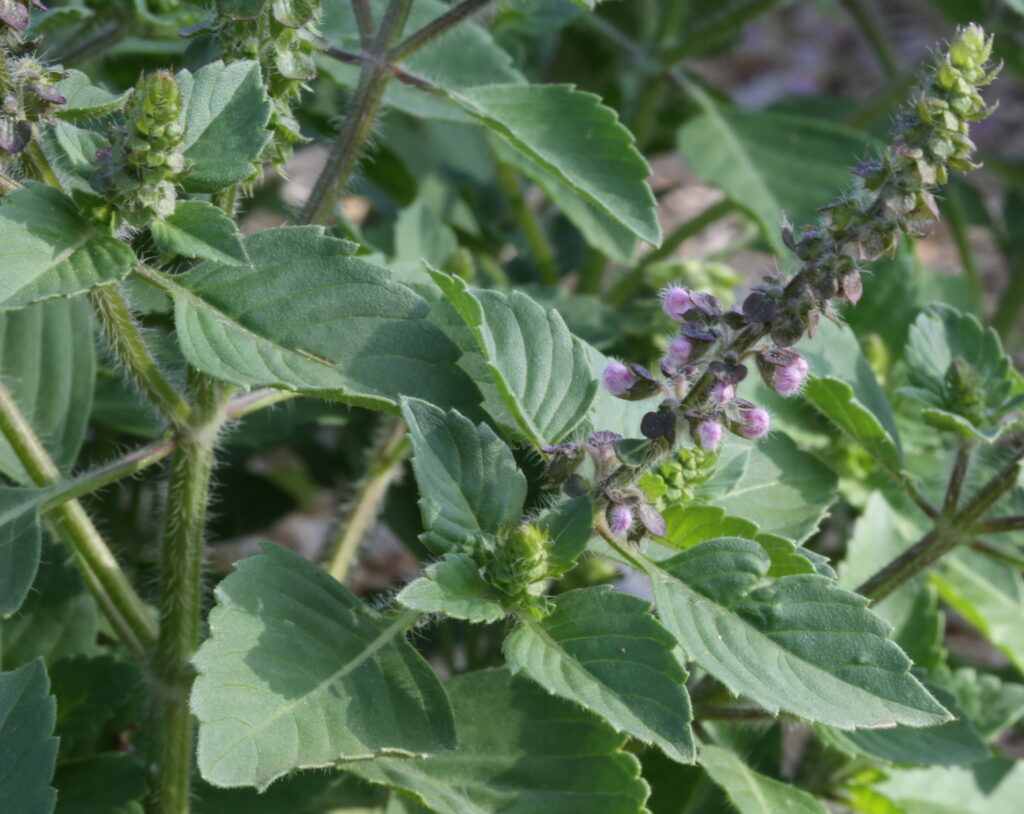
116 Published Studies, on Ocimum, to be Retracted, or Corrected, from the Years 1990 to 2025
May I reiterate that these 116 Studies, on Ocimum, from the Years 1990 to 2025, need to be Retracted, or Corrected, because they are pretending to analyse and work upon Basil species such as Ocimum basilicum, Ocimum tenuiflorum, Ocimum americanum, Ocimum kilimandscharicum, Ocimum gratissimum and Ocimum lamiifolium? When in fact, Ocimum bisabolenum was the subject of their study.
“Application of predictive modeling tools for the identification of Ocimum spp. herbal products”. 2025. Link.
“Sulfoquinovosyl diacylglycerol, a component of Holy Basil Ocimum tenuiflorum, inhibits the activity of the SARS-CoV-2 main protease and viral replication in vitro”. 2025. Link.
“Diversity in morphology and bioactive compounds among selected Ocimum species”. June 2024. Link.
“Genetic diversity and population structure of Ethiopian basil (Ocimum basilicum L.) accessions using DArTseq markers.”. June 2024. Link.
“Distribution, local use, and bio-prospecting opportunity of Ocimum americanum L. in Northwestern part of the Amhara Region, Ethiopia”. May 2024. Link.
“Harnessing the Antibacterial, Anti-Diabetic and Anti-Carcinogenic Properties of Ocimum sanctum Linn (Tulsi)”. India. 2024. Link.
“Characterization of the floral traits, pollen micromorphology and DNA barcoding of the edible flowers from three basil taxa (Lamiaceae)”. February 2024. Link.
“Health and therapeutic potentials of Ocimum essential oils: a review on isolation, phytochemistry, biological activities, and future directions”. 2024. Link.
“A comparison of high- and low-resolution gas chromatography–mass spectrometry for herbal product classification: A case study with Ocimum essential oils”. 2023 Link.
“A Comprehensive Review of the Phytochemical Constituents of Ocimum tenuiflorum”. 2023. Link.
“Phenotypic Variations and Bioactive Constituents among Selected Ocimum Species”. November 2023. Link.
“A comparison of high- and low-resolution gas chromatography–mass spectrometry for herbal product classification: A case study with Ocimum essential oils”. 2023. Link.
“Swiss ADME Predictions of Phytoconstituents Present in Ocimum sanctum Linn”. August 2023. Link.
“African and Holy Basil – a review of ethnobotany, phytochemistry, and toxicity of their essential oil: Current trends and prospects for antimicrobial/anti-parasitic pharmacology”. July 2023. Link.
“The chemotypes of Ethiopian Ocimum basilicum L. (sweet basil) germplasms”. 2023. Link.
“An Update on the Therapeutic Anticancer Potential of Ocimum sanctum L.: “Elixir of Life””. 2023. Link.
“Ethnomedicinal uses, phytochemistry and pharmacological study of Ocimum americanum L.: A review”. 2023. Link.
“Biochemical Compounds, Antioxidant Capacity, Leaf Color Profile and Yield of Basil (Ocimum sp.) Microgreens in Floating System”. 2023. Link.
“Diversity of Ethiopian sweet basil (Ocimum basilicum) germplasm for quantitative morphological traits”. 2023. Link.
“A taxonomic review of the genus Ocimum L. (Ocimeae, Lamiaceae)”. 2023. Link.
“Joint Action of Pb1 and Pb2 Provides Dominant Complementary Resistance Against New Races of Peronospora belbahrii (Basil Downy Mildew)”. 2022. Link.
“A Glance at the Phytochemical and Ethno-pharmacological Understanding of Four Ocimum Species”. 2022. Link.
“Identification of the Aroma Compounds of Ocimum americanum as a Function of Growth Stages and their In Vitro Antioxidant and Anti-inflammatory Potential”. 2022. Link.
“Chemical composition and antioxidant activities of the essential oils of Lippia adoensis and Ocimum sanctum”. 2022. Link.
“The Cultural and Commercial Value of Tulsi (Ocimum tenuiflorum L.): Multidisciplinary Approaches Focusing on Species Authentication”. 2022. Link.
“Effect of Drying Methods and Drying Days on Essential Oil Content and Physicochemical Properties of Basil (Ocimum basilicum) Varieties in Ethiopia”. 2022. Link.
“Ocimum Species: A Review on Chemical Constituents and Antibacterial Activity”. 2022. Lien.
“A Systemic Review of Ocimum sanctum (Tulsi): Morphological Characteristics, Phytoconstituents and Therapeutic Applications”. 2022. Link.
“Antibacterial activity of basil leaves (Ocimum basilicum) against Bacillus cereus”. 2022. Link.
“Performance of Ethiopian Sweet (Ocimum basilicum) Genotypes”. 2022. Link.
“A review on: Medicinals uses of spices and condiments in Ethiopia”. 2022. Link.
“Chemical Composition and Antifungal Potential of the Essential Oils of Ocimum gratissimum L, Ocimum suave L, Aframomum alboviolaceum Ridley and Zingiber officinale Roscoe against Two Molds associated with to the Alteration of Smoked Fish Ethmalosa fimbriata Bowdich”. 2022. Link.
“Agronomy, Chemical Analysis, and Antidiabetic Activity of Basil ( Ocimum Species)”. 2022. Link.
“Estimation of Morphological Features and Essential Oil Content of Basils (Ocimum basilicum L.) Grown under Different Conditions”. 2022. Link.
“A review on phytochemical and pharmacological activities of selected Ocimum species”. 2021. Link.
“A glance at the chemodiversity of Ocimum species: Trends, implications, and strategies for the quality and yield improvement of essential oil”. 2021. Link.
“Determination of Seasonal Variation of Volatile Organic Constituents of the Leaves of Traditional Herb Ocimum sanctum”. 2021. Link.
“Tulsi – A Review Based Upon Its Ayurvedic and Modern Therapeutic Uses”. 2021. Link.
“Benefit and use of Sweet basil in Ethiopia. A review”. 2021. Link.
“Chemotypic Characterization of Ocimum basilicum L. Essential Oils for Ethiopian Genotypes”. March 2021. Link.
“Aroma Profile of the Aerial Parts of Ocimum sanctum L. Harvested at Vegetative and Full Blooming Stages from Three Altitudes of North India”. 2021. Link.
“Bioactive Compounds and Aroma Profile of Some Lamiaceae Edible Flowers”. 2020. Link.
“Constituents and Biological Activities Some of the Selected Ocimum Species: A Review”. 2020. Link.
“Phytochemical and Pharmacological Overview on Ocimum sanctum: effect of growth stages”. 2020. Link.
“Effect of Natural Drying Methods on Flavour Profile of Camphor Rich Ocimum americanum L. from North India”. 2019. Link.
“Systematic Position, Phylogeny, and Taxonomic Revision of Indian Ocimum”. 2018. Link.
“A review on phytochemical and pharmacological properties of Holy basil (Ocimum sanctum L.)“. 2018. Link.
“Variation in Growth and Development, and Essential Oil Yield between Two Ocimum Species (O. tenuiflorum and O. gratissimum) Grown in Georgia”. 2018. Link.
“Impact of Drying Methods on Essential Oil Composition of Ocimum americanum L. From Kumaun Himalayas”. 2018. Link.
“Population structure, genetic diversity and downy mildew resistance among Ocimum species germplasm”. 2018. Link.
“Traditional Plant Breeding in Ocimum”. 2018. Link.
“Extraction of Essential Oil from Ocimum Lamiifolium Using Steam Distillation”. 2018. Link.
“A review on: Indian traditional shrub Tulsi (Ocimum sanctum): The unique medicinal plant”. 2018. Link.
“Product authenticity versus globalization – The Tulsi case”. 2018. Link.
“Genetics, Cytogenetics, and Genetic Diversity in the Genus Ocimum”. 2018. Link.
“Product authenticity versus globalisation— The Tulsi case”. 2018. Link.
“Chemical composition, genetic diversity, antibacterial, antifungal and antioxidant activities of camphor-basil (Ocimum kilimandscharicum Guerke)”. 2018. Link.
“Phytoconstituents, traditional, medicinal and bioactive uses of Tulsi (Ocimum sanctum Linn.): A review. 2017. Link.
“Genetic diversity and chemotype selection in genus Ocimum”. 2017. Link.
“Agronomic and Bio-chemical Variability of Ethiopian Sweet basil (Ocimum basilicum) Accessions”. 2017. Link.
“Protection of polyunsaturated fatty acids of fish oil from common Kilka (Clupeonella cultriventris caspia) using holy basil (Ocimum sanctum) essential oil”. 2017. Link.
“Assessment of the Essential Oil Composition in Ocimum species of Uttarakhand”. 2017. Link.
“Morphological and biochemical intraspecific characterization of Ocimum basilicum”. 2017. Link.
“Epidemiology of Basil Downy Mildew”. 2017. Link.
“Ocimum sanctum (Tulsi), the Queen of Herbs : A Review”. India. 2016. Link.
“A comparative study of morphological and anatomical structures of four Ocimum species in Uttarakhan. India”. 2016. Link.
“Chemical constituents, physicochemical properties and antibacterial activity of leaves essential oil of Ocimum urticifolium”. 2016. Link.
“Genetic characterization of Ocimum genus using flow cytometry and inter-simple sequence repeat markers”. 2016. Link.
“Comparative Volatile Oil Composition of Three Ocimum Species from Western Himalaya”. 2016. Link.
“Introduction of Ocimum tenuiflorum plant to the Egyptian cultivation”. 2016. Link.
“Antimicrobial Activity of Tulsi (Ocimum tenuiflorum) Essential Oil and Their Major Constituents against Three Species of Bacteria”. 2016. Link.
“Spectral and chemometric analyses reveal antioxidant properties of essential oils from four Cameroonian Ocimum”. 2016. Link.
“Chemical profile of Ocimum americanum L. from north- western Himalayan region: A comparative study”. 2016. Link.
“Diversity analyses in Ocimum species: Why and how?”. 2016. Link.
“Resistance Against Basil Downy Mildew in Ocimum Species”. 2015. Link.
“Sources of variability in essential oil composition of Ocimum americanum and Ocimum tenuiflorum”. 2015. Link.
“Chemical Composition, Antioxidant and Antimicrobial Activities of the Essential Oils of Twelve Ocimum basilicum L. Cultivars Grown in Serbia”. 2015. Link.
“The Effect of Different Harvest Stages on the Quality and Quantity of the Essential Oil of Tulsi (Ocimum sanctum L.)”. 2015. Link.
“Effect of drying on the quality of essential oil of Ocimum americanum”. 2015. Link.
“Chemical composition of the essential oil of Ocimum tenuiflorum L. (Krishna Tulsi) from North West Karnataka, India”. 2014. Link.
“Acaricidal activity of five essential oils of Ocimum species on Rhipicephalus (Boophilus) microplus larvae”. 2014. Link.
“Morphological Characteristics and Susceptibility of Basil Species and Cultivars to Peronospora belbahrii”. 2014. Link.
“Phytoconstituents, traditional medicinal uses and bioactivities of Tulsi (Ocimum sanctum Linn.): A review”. 2014. Link.
“A Rapid Screening Approach to Identify Resistance to Basil Downy Mildew (Peronospora belbahrii)”. 2014. Link.
“Chemical composition and antimicrobial activity of essential oil of Ocimum kilimandscharicum (R. Br.) Guerke: A new chemotype”. 2014. Link.
“Selecting basil genotypes with resistance against downy mildew”. 2014. Link.
“Essential Oils in Holy Basil (Ocimum tenuiflorum L.) as Influenced by Planting Dates and Harvest Times in North Alabama”. 2014. Link.
“Effects of Ocimum spp. essential oil on Monilinia laxa in vitro”. 2013. Link.
“Antifungal activity of essential oils of some Ocimum species collected from different locations of Uttarakhand”. 2013. Link.
“Genetic diversity among Ocimum species based on ISSR, RAPD and SRAP markers” 2013. Link.
“Exploring compositional diversity in the essential oils of 34 Ocimum taxa from Indian flora”. 2013. Link.
“Compositional Variability and Antifungal Potentials of Ocimum basilicum, O. tenuiflorum, O. gratissimum and O. kilimandscharicum Essential Oils against Rhizoctonia solani and Choanephora cucurbitarum”. 2013. Link.
“Chemical Compositions and Antimicrobial Activities of Ocimum sanctum L. Essential Oils at Different Harvest Stages”. 2013. Link.
“Variation in essential oil composition of Ocimum americanum L. from north-western Himalayan region”. 2013. Link.
“Pharmacognostical, phytochemical and pharmacological variations in various species of Ocimum genus a review”. 2012. Link.
“Molecular and chemical characterization of the most widespread Ocimum species”. July 2011. Link.
“Variations in phenolic composition and antioxidant properties among 15 basil (Ocimum basilicum L.) cultivars”. 2011. Link.
“A study of 34 cultivars of basil (Ocimum L.) and their morphological, economic and biochemical characteristics, using standardized descriptors”. 2010. Link.
“Chemical composition and antioxidant activity of the essential oils of Ocimum americanum and Ocimum basilicum var. thyrsiflorum”. 2010. Link.
“Plant species used in traditional smallholder dairy processing in East Shoa, Ethiopia”. 2010. Link.
“Susceptibility of Basil Cultivars and Breeding Lines to Downy Mildew”. 2010. Link.
“Ocimum Sanctum (tulsi): Bio-pharmacological Activities”. 2010. Link.
“Estimation of nuclear DNA content of cultivated Ocimum species by using flow cytometry”. 2010. Link.
“Analysis of Inter-Species Relationships of Ocimum Species Using RAPD Markers”. India. 2008. Link.
“Chemical characterization of basil (Ocimum spp.) based on volatile oils”. 2006. Link.
“Radical scavenging activity of volatile oils of herbs traditionally used to spice cooking butter in Ethiopia”. 2005. Link.
“Composition of the Essential Oil of Ocimum in Poland During Vegetation”. 2005. Link.
“Chemical profiling of Ocimum americanum using external flavonoids”. 2003. Link.
“Genetic Diversity of Basil (Ocimum spp.) based on RAPD Markers””. 2003. Link.
“Chemical constituents of the volatile fractions from leaves and flowers of Ocimum urticifolium”. 2003. Link.
“Leaf flavonoid glycosides as chemosystematic characters in Ocimum”. 2002. Link.
“Effects of Ocimum sanctum (Tulsi) on the reproductive system: An updated review”. India. 2002. Link.
“Basil: A Source of Aroma Compounds and a Popular Culinary and Ornamental Herb”. January 1999. Link.
“Essential oils of Ocimum gratissimum L. and Ocimum tenuiflorum L. (syn. Ocimum sanctum L.) grown in Andhra Pradesh” 1996. Link.
“Constituents of the essential oil from the holy basil or tulsi plant, Ocimum sanctum”. 1990. Link. Link.
“Basil: a source of essential oils”. 1990. Link.
Xochi… who am I?
As I am clear of the existential weight, and burden, of any official PhD, in my Life, I am going to precise, for the sake of total transparency, who I am… as, in the self-proclaimed “scientific” world, a PhD diploma is a must – not to say THE consecration – to be recognized by “peers”… and, foremost, by THE Establishment.
Judging by the total disdain, incompetence, and hypocrisy, of the so-called Basil PhD world experts – in ignoring my discoveries about the Ethiopian Ocimum bisabolenum and not answering my mails – I would be inclined to paraphrase the genius musician dissident, Frank Zappa: « The Ocimum PhD people are boring me to pieces… Make me feel like I’m wasting my time»!
I wish to precise, first of all, as the woke and LGBT epidemics are raging worldwide, that I am no new-age plant faddist rendering a cult to the Vegan Mary – virgin of any animal flesh and blood.
Neither am I a neo-darwinist cultist lost in the illusions, and delusions, of his religious pseudo-evolutive mythos… which is just, by the way, a tool of social control of the masses – and a pernicious one at that.
In fact, although not being the heart of the subject of this open letter, today, I am a very enthusiastic proponent of the “Intelligent Design”…. with the following caveat: Intelligence, in the Biosphere, has nothing to do with the famous Abrahamic God – Yahveh, Yaldabaoth, Jehovah, Saklas the Blind, the Lord of the Archons…
Indeed, nowadays, and very unfortunately, most of the active proponents of “Intelligent Design”, in USA – invalidating the so-called scientific divagations, and the blind and non intelligent Evolution, of the neo-darwinist cult – are just plain monotheists enmeshed, blindly, in the superstitions of the three Abrahamic religions.
In truth, in the Biosphere, the Mother Earth is the Supreme and Sovereign Planetary Intelligence: She is The Source, the Setting and the Story.
I have been involved, with passion and excellence, in the world of plants, food-plants and medicinal plants for close to half a century – and I am 71 years old.
When I was 20 years old, I discovered the French Alpine flora. At 25, I discovered the Himalayan flora of Nepal, Ladakh, Kashmir, Himachal Pradesh… and at 57, I discovered the Himalayan flora of Bhutan – when I was invited by the ministry of agriculture to give workshops and talks about the organic seed production of vegetables.
My agronomical paths have met many world botanical Species and Families as I have been involved, for many a good years, in 25 countries – of all continents except Australia – giving organic seed production workshops and distributing the free organic seeds given by Association Kokopelli.
Thus, here are my letters, and feats, of credence in the Real world and not the quasi-Virtual world of PhD “papers” – which will be, more and more, ejected from the chips and robots of the Artificial non-Intelligence… as long as it lasts… which should not be too long as the virtual dog is chasing its own faky tail.
What the Fake is Going on with the Human Tribes?
Botanical Arts and Sciences
Although being French, I spent 25 years of my life in USA – mostly on the west coast… with the exception of a few winters in Vermont and New-Hampshire, in the 1980’s, when I was a PSIA cross-country ski instructor. Thus, for years on, as early as 2004, I drove many thousands of kilometers in the deserts and mountains of the West – Washington, Oregon, California, Nevada, Idaho, Utah, New-Mexico and Arizona.
In fact, I destroyed my second motor-home (7 meters long) driving, recklessly, on the desert and mountain roads, and rocky trails, of Death Valley.
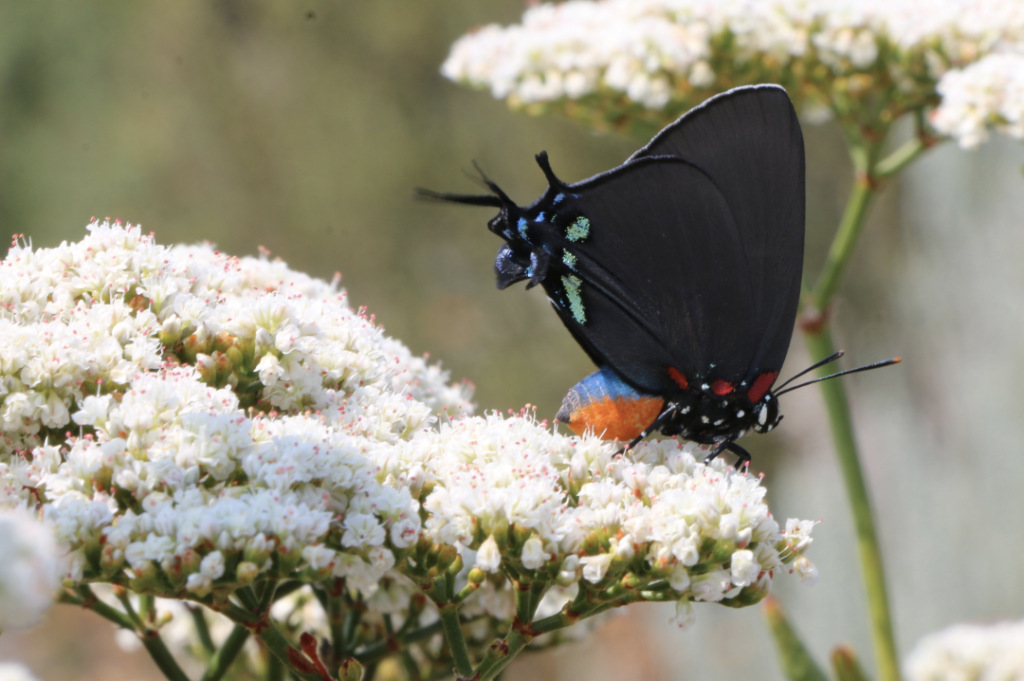
According to the late James Reveal, I discovered two subspecies of Eriogonum in the USA: a subspecies of Eriogonum microthecum, Eriogonum microthecum var. cyclophyllum, in the summer 2016, at the foot of Mount Shasta, California – which bears my name – and a subspecies of Eriogonum umbellatum, on Mount Adams, Washington.
I proposed to call this new variety “Eriogonum umbellatum var. klickitatii” because Mount Adams was known by some Native American Tribes as Pahto or Klickitat.
In July 2009, I discovered different white populations of Mimulus lewisii/Erythranthe lewisii var. albiflorum, at Crater Lake in Oregon. There was no mention on the web, at that time, of a studied and investigated white form of Mimulus lewisii. Upon my botanical discovery, I informed, twice, the direction of the Crater Lake Park but I never got any answer. In August 2009, Douglas W. Schemske, of the Michigan State University (Department of Plant Biology), told me he would be interested by a few seeds stemming from the few dry pods of the white flowered plant I had dry-pressed.
In June 2010, on Grizzly Peak, above Ashland, Oregon, I discovered the presence of Claytonia saxosa – Portulacaceae Family – which has never previously been reported, or collected, in Oregon.
As a co/incidence, the same month, the botanist Jim Duncan, of the Siskiyou chapter of the Native Plant Society of Oregon, had himself collected plants of Claytonia saxosa in another site of the Cascade-Siskiyou National Monument. Ainsi va la Vie!
My botanical websites are here:
Gaïan Ethnobotany is my first botanical site. I present a large number of botanical species from the western USA – including dozens of species of Calochortus, Lomatium and others.
Eriogoneae is my second botanical site. It’s a reference site, in English, on the Tribe Eriogoneae and more specifically on the genus Eriogonum. I had planned to produce an 800-page reference work, in collaboration with James Reveal, (the USA’s Polygonaceae expert) on the genus Eriogonum (with over 400 species and subspecies), namely the wild buckwheats. Jim having passed away, prematurely, at the age of 74, I decided to present all my photographic work online on a website dedicated to this tribe of the Polygonaceae family – and which is the only site, today, in the world, to offer such a wide range of Eriogonum species, with top-quality photographs.
Oregon Flora of Gaïa is a small botanical section of my French website Liberterre – which present more than 1100 articles, documents, translations, etc.
Food Plants, Seeds and Biodiversity
With Sofy, my wife, and a friend, Jocelyn Moulin, we launched the Jardin Botanique de la Mhotte, in November 1992, on a 55-hectare farm acquired by a group of businesses, and non-profit organizations, to free land from the grip of agrochemical farming. The emergence of Kokopelli’s primordial ancestor was a memorable epic. We had 20 hectares of extensive organic seed production, with some forty people – on contracts subsidized by the State: homeless, mentally and physically handicapped, ex-convicts, etc, etc….
Thus, I have been in professional organic seed production since 1994 – with Terre de Semences. I am, then, the founder in 1999, of “Association Kokopelli”, in France, which has the biggest offer of Open-Pollinated and Heirloom Organic Seeds in the world: it is not a rumor but just a fact.
I am a warrior… I am the one who liberated the seeds in Europe. I spent 10 years of struggle with Kokopelli, in the European Courts of Injustice, against Monsanto and the whole seed-mafia – and their Deep State stooges… and we are still alive.
Since 1997, we have been threatened, and persecuted, by the French State and the Seed Mafia – for selling Open-Pollinated organic seeds non registered in the national lists of the UPOV empire of F1 chimeras. Our trials, in the French and European Courts of Injustice, lasted from 2005 to 2014 – up to the European Court of Injustice in Luxembourg.
We lost in the Courts… but we won, in the Real Life, because we are still alive, and fighting, since 1994.
In October 2000, Association Kokopelli set up, Annadana, a community seed bank and seed production gardens in Auroville, Tamil Nadu, southern India – and I moved there for two years with my wife and three of our children to launch the project. Annadana ran wonderfully for 12 years under the exceptional guidance of our friend Stéphane Fayon.
In the fall 2000, we had sent, from France, a 20-cubic-meter container, by boat, in direction of Chennai, Tamil Nadu – with seeds, gardening equipment, seed production equipment, etc – to start the seed project. We smuggled, with the “blessings” of the chief officier of the port, 250 kgs of French organic seeds of vegetables, into India, which we distributed all over south-east Asia… before launching our own organic gardens of seed production, in Auroville, to be distributed all over India.
In 2012, we launched the organization of a “Kokopelli-Pachamama” festival, near Ollantaytambo, in the Sacred Valley of the Incas, in Peru, for the month of August. We lived in Peru for 8 months with Sofy, my wife, to prepare the festival which was a magnificent epic bringing together 500 seed-guardians, for a whole week, from all corners of Latin America, from Mexico to Patagonia, to exchange seeds, ideas on seeds and future prospects for seed-keeper networks.
During this festival, Vandana Shiva – the food activist star from India – was kind enough to spend a few days with us.
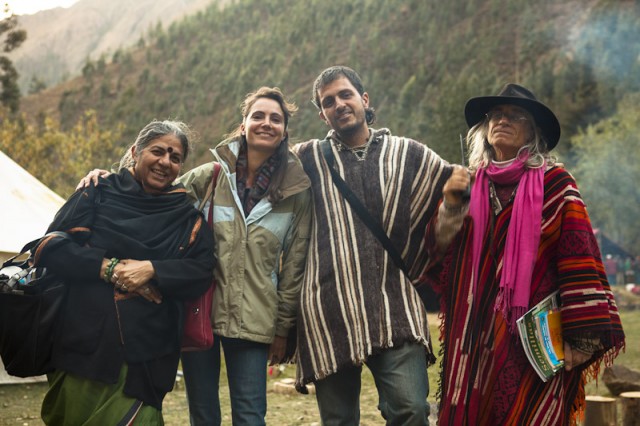
August 2012. Ollantaytambo. Peru. Vandana Shiva (India), Blanche Magarinos-Rey (Kokopelli’s lawyer in France), Fabian Pacheco (Costa-Rica) and Xochi (France) – sometimes in search of breath for 8 months, of preparations, at 3200 meters of altitude.
Since 1994, in French, Spanish and English, I taught organic seed production in 25 countries of the world, in all continents except Australia, to farmers and agronomists alike
Do I mean real PhD agronomists… although I am no PhD, myself? Indeed! No kidding! What fun! Real PhD agronomists with 7 years of brain-washing in universities owned by the Pharma-Agro-Chemical Mafia. Tout va bien?
I travelled so much by air! Today, I am fed up with their global digital dictature and I will not go to Ethiopia although I am a aventurer and botanical explorer – without speaking about the fact that Somalia is ready for a war with Ethiopia. Business as usual as the military-industrial complex is ruling the world.
I sold almost 100 000 copies of my French book “Les Semences de Kokopelli” – today, in its 18th edition: 848 pages, all in colour and 3,5 kgs of paper. It is a book about organic seed production while presenting the extensive offer of Association Kokopelli in seed diversity… with 600 cultivars of tomatoes, 400 cultivars of peppers, 250 cultivars of squashes, etc, etc. The Best in the World!
Medicinal Plants
Back in 1986, I co-created the Deva Laboratory of Flower Essences – which is, still, today in activity – while translating a few books in French, from the English, about the Bach Flower Remedies and other new Flower Essences. I left 8 years later to work on seeds and protection of food biodiversity.
Around 1994, with Terre de Semences, our seed company, we started to introduce medicinal plants totally unknown in France – such as species of Ocimum, Agastache… and the famous temperate Sacred Tulsi.
In 2014, 20 years later, with the non-profit association Kokopelli – which took up the torch, in 1999, from Terre de Semences threatened by the French State and the Seed Mafia – I presented a new and very broad offer of organic seeds of Master Medicinal Plants… Because we are heading towards a Primitive Future, fortunately… as the allopathic system of pseudo-medecine is a total scam.
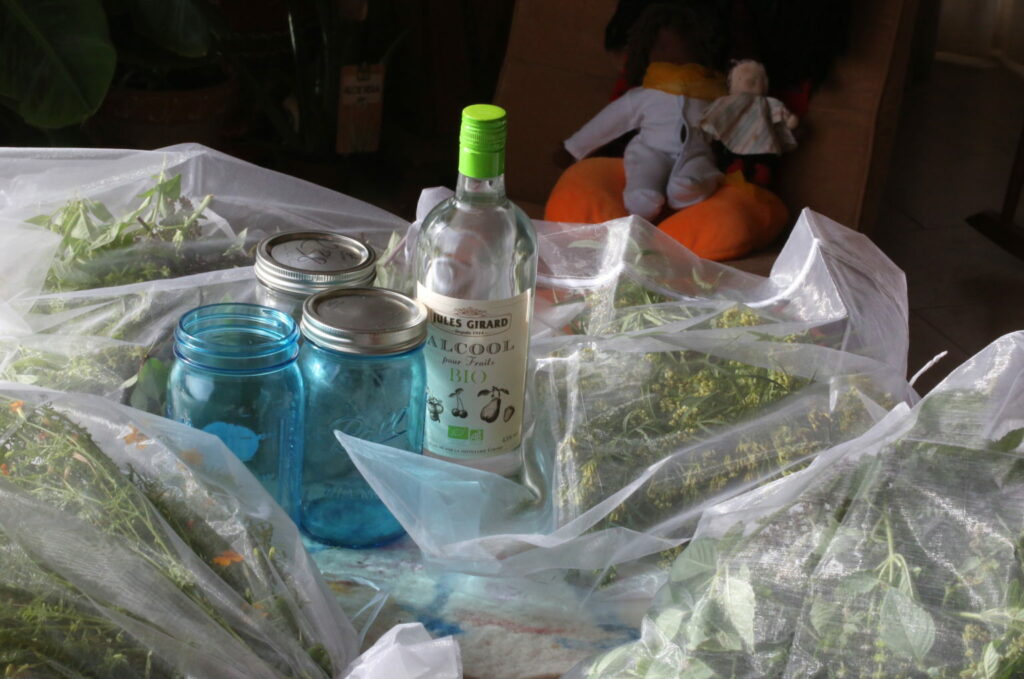
In spite of the French sanitary dictature, we educated our 5 children without any “vaccines”… which constitute the biggest scam of the Rockefeller allopathic so-called medecine since 1918/1920 – when the Globalists launched their first planetary scam-pandemics. Cf. my essay “H1N1 never existed : The Spanish Flu, of 1918/1920, was a Bacterial Pneumonia induced by the Rockefeller Foundation’s “vaccines””.
In the fall 1999, I released a new book, “Los Cantos de Xochi. Aux Armes d’Instructions Massives”, a 464-page, full-color, large-format book featuring some 350 pages of Cantos, articles and essays (45 in all), 21 pages of my botanical pictures and 44 “Picasso” paintings of my friend Mushroom, aka Alan Michael Kapuler – the most genial breeder for organic gardening and farming in USA and in the world.
Since 2018, I wrote, and published on line, 65 monographs on Master Medicinal Plants – each monograph being from a few pages to 70 pages long.
All my written opus, on my different websites, is totally free to read and partake. And I am not selling any T-shirt or coffee-cups! Enjoy!
Xochi. October 4th 2024
Contact: Xochipelli@protonmail.com
